All reports
Myasthenia gravis
·
Jan 23, 2025
Understanding myasthenia gravis: a guide for patients
An essential guide to myasthenia gravis: understanding what it is, treatment options and steps towards empowerment and hope
Reports are in beta and continually improving. They are not a substitute for professional medical advice. Please contact us to give feedback.
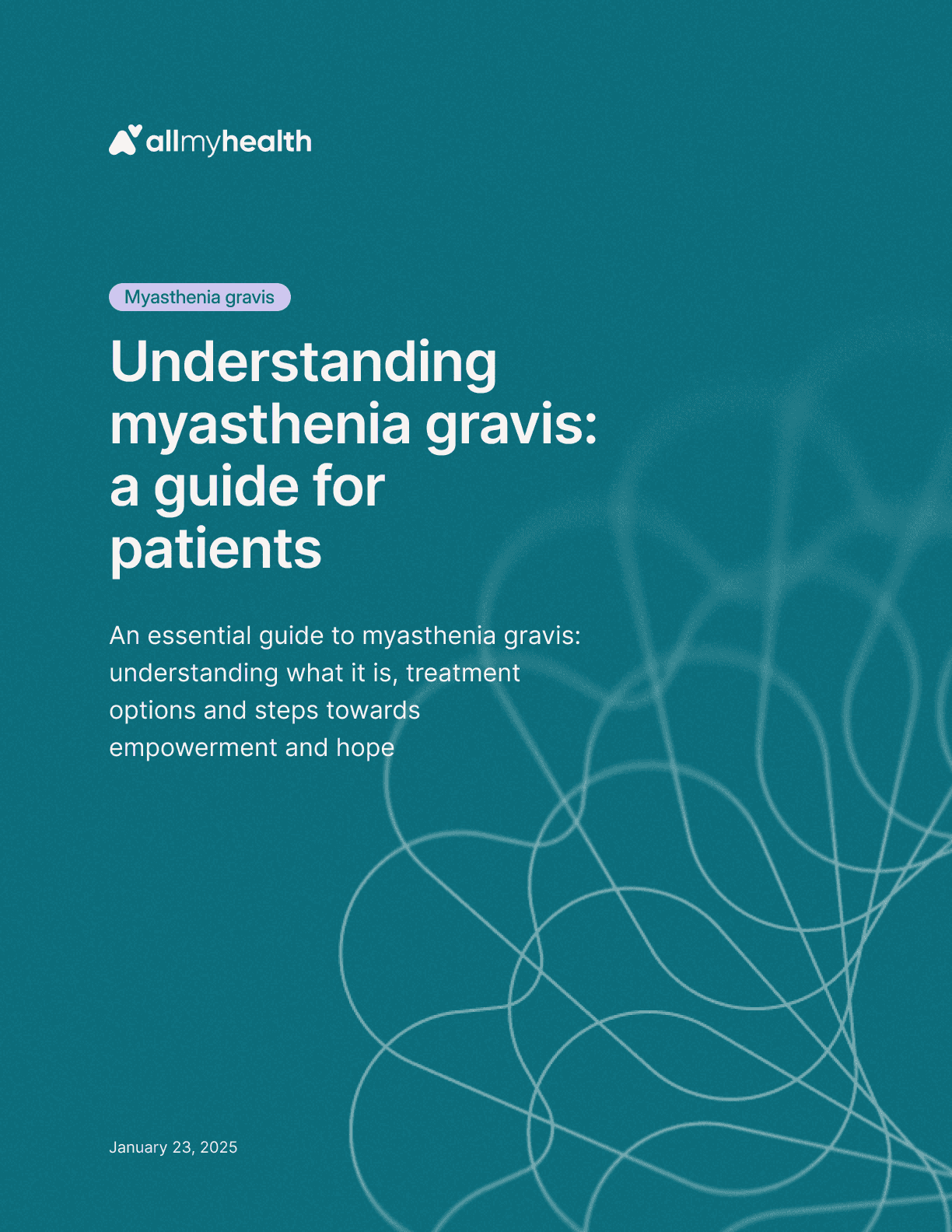
Stay informed
This report was published in our weekly newsletter and on our community page. Follow to stay up to date with the latest news and research relevant to your condition.
Listen to the audio version
Introduction
Myasthenia gravis is a chronic autoimmune disease [1]. In simpler terms, this means your body's defense system, which normally protects you from illness, mistakenly attacks healthy parts of your body [2]. In MG, this attack targets the connection between your nerves and muscles [2].
To understand this better, imagine your nerves sending messages to your muscles, telling them to move. These messages travel through a special messenger called acetylcholine [1]. In MG, your body creates antibodies that block or destroy the areas where these messages are received by your muscles [3]. This disruption leads to muscle weakness, which is the hallmark of MG [3].
What is Myasthenia Gravis?
Myasthenia gravis is a chronic autoimmune disease [1]. In simpler terms, this means your body's defense system, which normally protects you from illness, mistakenly attacks healthy parts of your body [2]. In MG, this attack targets the connection between your nerves and muscles [2].
To understand this better, imagine your nerves sending messages to your muscles, telling them to move. These messages travel through a special messenger called acetylcholine [1]. In MG, your body creates antibodies that block or destroy the areas where these messages are received by your muscles [3]. This disruption leads to muscle weakness, which is the hallmark of MG [3].
Breaking Down the Medical Terms
Let's clarify some of the terms you might encounter when learning about MG:
Neuromuscular junction: This is the point where your nerves and muscles meet and communicate. It's like a tiny bridge where the nerve sends its message (acetylcholine) to the muscle.
Antibodies: These are proteins produced by your immune system to fight off infections. In MG, they mistakenly attack the receptors on your muscles that receive nerve signals.
Acetylcholine: This is the chemical messenger that carries signals from your nerves to your muscles, telling them to contract.
Thymus gland: This gland, located in your chest, plays a role in your immune system. It can sometimes be larger than normal or have abnormal growths (thymomas) in people with MG [2].
Autoimmune disease: This is a condition where your immune system mistakenly attacks your own body's tissues.
Chronic: This means the condition is ongoing and long-lasting.
Skeletal muscles: These are the muscles that you control voluntarily to move your body.
Symptoms of Myasthenia Gravis
MG can affect different muscles in your body, leading to a variety of symptoms. These symptoms often fluctuate, meaning they can be better some days and worse on others [5]. This fluctuation can make it challenging to plan activities and manage daily life, as the intensity of muscle weakness can change from day to day, even hour to hour [6]. Most people with MG find they feel strongest in the morning and weakest at the end of the day [6]. Some common symptoms include:
Eyelid drooping (ptosis): One or both eyelids may droop, making it difficult to keep your eyes open. This can interfere with daily tasks like reading, watching TV, and driving [3].
Double vision (diplopia): You may see two images instead of one, which can also make activities like reading and driving dangerous [3].
Facial muscle weakness: This can make it difficult to smile, frown, or make other facial expressions. It can also affect your ability to close your mouth completely, potentially leading to drooling. These changes in appearance can sometimes cause difficulty expressing emotions [8].
Difficulty chewing and swallowing: You may find it hard to chew food thoroughly or swallow liquids [7].
Slurred speech: Your speech may become unclear or difficult to understand [2].
Weakness in the arms, legs, or neck: This can make it challenging to lift objects, walk, or hold your head up. It can impact your ability to perform everyday tasks, such as getting dressed, climbing stairs, or even holding a cup [2].
Shortness of breath: In some cases, MG can affect the muscles involved in breathing, leading to difficulty catching your breath or feeling short of breath during physical activity [2].
It's important to remember that everyone experiences MG differently. You may have some of these symptoms or others not listed here.
Potential Complications
One of the most serious complications of myasthenia gravis is a myasthenic crisis. This is a condition of extreme muscle weakness, particularly of the diaphragm and chest muscles that support breathing [5]. Breathing may become shallow or ineffective, and the airway may become blocked because of weakened throat muscles and a build-up of secretions [5]. A myasthenic crisis may be caused by a lack of medicine or by other factors, such as a respiratory infection, emotional stress, surgery, or some other type of stress [5]. In a severe crisis, a person may have to be placed on a ventilator to help with breathing until muscle strength returns with treatment [5].
Treatment Options
While there is no cure for MG, various treatments can help manage your symptoms and improve your quality of life. These include:
Medications:
Anticholinesterase inhibitors: These medications help improve communication between your nerves and muscles by increasing the amount of acetylcholine available [9].
Immunosuppressants: These drugs help reduce the activity of your immune system, which is attacking your neuromuscular junctions [9].
Corticosteroids: These powerful anti-inflammatory drugs can help control symptoms, but they may have side effects with long-term use [10].
Thymectomy: This surgical procedure involves removing the thymus gland, which can improve symptoms in some people with MG [11].
Plasmapheresis and intravenous immunoglobulin (IVIg): These therapies help filter out the harmful antibodies from your blood [11].
Your doctor will work with you to determine the best treatment plan based on your specific symptoms and needs.
Living with Myasthenia Gravis
Living with a chronic illness like MG can be challenging, both physically and emotionally. It's important to remember that you are not alone. Here are some tips for coping with MG:
Pace yourself: Avoid overexertion and take breaks when needed. Listen to your body and don't push yourself beyond your limits.
Get enough rest: Fatigue can worsen MG symptoms, so prioritize sleep. Aim for 7-9 hours of quality sleep each night.
Eat a healthy diet: Proper nutrition is essential for overall health and well-being. Focus on a balanced diet with plenty of fruits, vegetables, and whole grains.
Manage stress: Stress can trigger or worsen symptoms, so find healthy ways to cope with stress, such as exercise, relaxation techniques, or spending time in nature. Consider activities like yoga, meditation, or deep breathing exercises.
Connect with others: Join a support group or online forum to connect with other people living with MG. Sharing your experiences and learning from others can be incredibly helpful. You can find information about local support groups and online forums through organizations like the Myasthenia Gravis Foundation of America (MGFA) [5].
In addition to the physical challenges, MG can also take an emotional toll. You might experience frustration, anxiety, or even depression due to the unpredictable nature of the disease and its impact on your daily life [8]. It's important to acknowledge these feelings and seek support when needed. Consider talking to a therapist or counselor who can help you develop coping strategies and manage the emotional aspects of living with MG [8]. Engaging in creative outlets, such as painting, writing, or music, can also be a helpful way to express your emotions [8].
Resources and Support
Here are some organizations that can provide valuable information, support, and resources for people with MG:
Myasthenia Gravis Foundation of America (MGFA):(www.myasthenia.org)
Muscular Dystrophy Association (MDA):(www.mda.org)
These organizations offer a wealth of information about MG, including research updates, treatment options, and coping strategies. They also provide resources for finding local support groups and connecting with other people living with MG.
Conclusion
Myasthenia gravis is a chronic condition that can present unique challenges, but with the right information, support, and treatment, you can live a full life. This guide has provided a starting point for understanding MG and its medical terminology. Remember to work closely with your healthcare team to develop a personalized treatment plan and find the resources that best meet your needs. By actively participating in your care, practicing self-care strategies, and connecting with others, you can navigate the challenges of MG and live well with this condition.
References
1. Myasthenia Gravis fact sheet, https://www.ninds.nih.gov/sites/default/files/migrate-documents/myasthenia_gravis_e_march_2020_508c.pdf
2. Myasthenia gravis - NHS,
https://www.nhs.uk/conditions/myasthenia-gravis/
3. Myasthenia Gravis | National Institute of Neurological Disorders and Stroke, https://www.ninds.nih.gov/health-information/disorders/myasthenia-gravis
4. Myasthenia Gravis | Johns Hopkins Medicine, https://www.hopkinsmedicine.org/health/conditions-and-diseases/myasthenia-gravis
5. Myasthenia Gravis: What It Is, Causes, Symptoms & Treatment - Cleveland Clinic, https://my.clevelandclinic.org/health/diseases/17252-myasthenia-gravis-mg
6. Myasthenia Gravis | MG - MedlinePlus,
https://medlineplus.gov/myastheniagravis.html
7. Myasthenia gravis - Symptoms and causes - Mayo Clinic, https://www.mayoclinic.org/diseases-conditions/myasthenia-gravis/symptoms-causes/syc-20352036
8. Medical Management - Myasthenia Gravis (MG) - Diseases, https://www.mda.org/disease/myasthenia-gravis/medical-management
9. Myasthenia Gravis Treatments | Myasthenia Gravis Foundation of America, https://myasthenia.org/myasthenia-gravis-treatments/
10. Myasthenia Gravis Treatment & Management - Medscape Reference, https://emedicine.medscape.com/article/1171206-treatment

Gaucher disease
·
Inclusion of Gaucher disease in newborn screening panels across the U.S.
Apr 9, 2025

Hemophilia
·
Qfitlia: A breakthrough in hemophilia treatment
Apr 3, 2025

Multiple myeloma
·
Navigating clinical trials in multiple myeloma
Apr 2, 2025

Gene and cell therapy
·
An introduction to cell therapy
Mar 25, 2025

Gene and cell therapy
·
An introduction to gene therapy
Mar 19, 2025
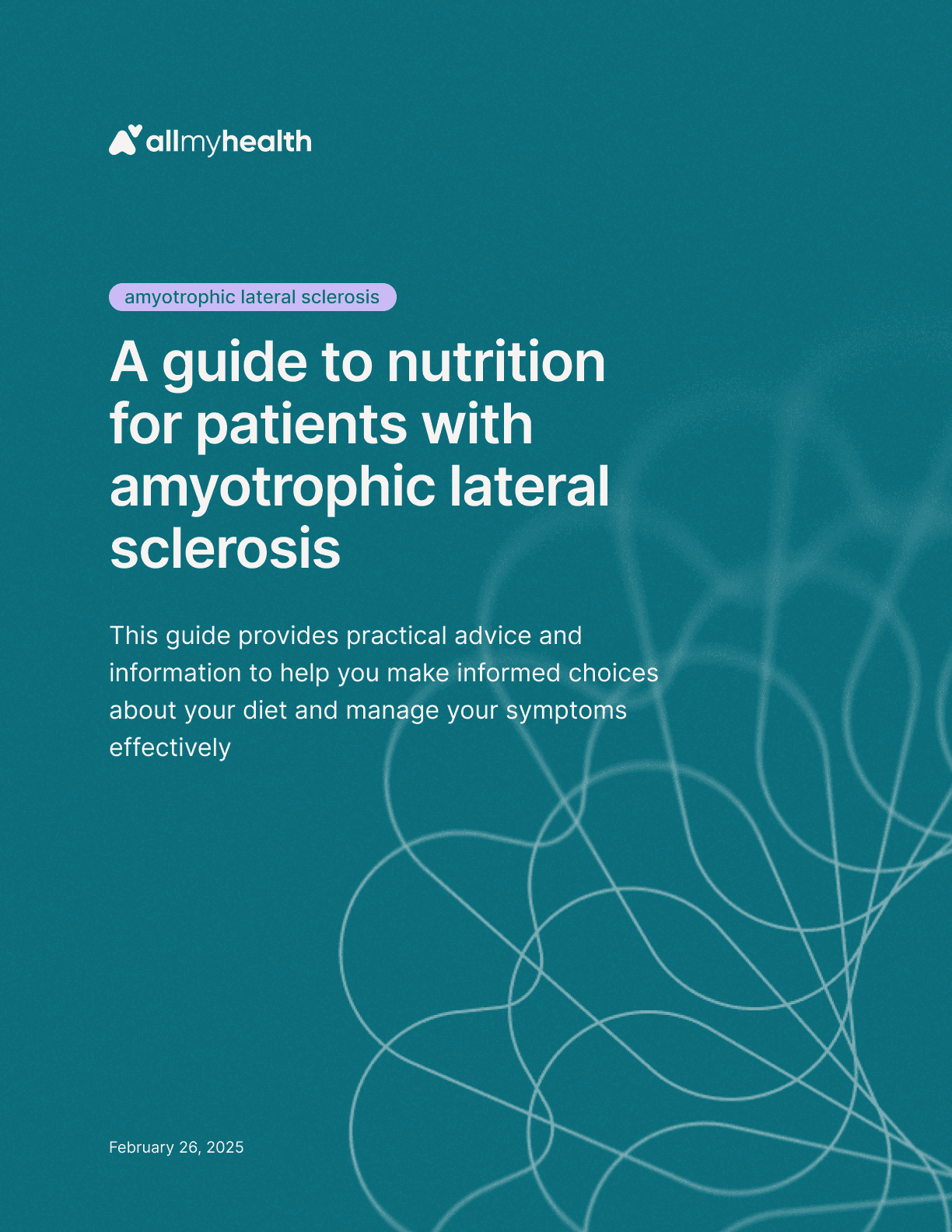
Amyotrophic lateral sclerosis
·
A guide to nutrition for patients with amyotrophic lateral sclerosis
Feb 26, 2025
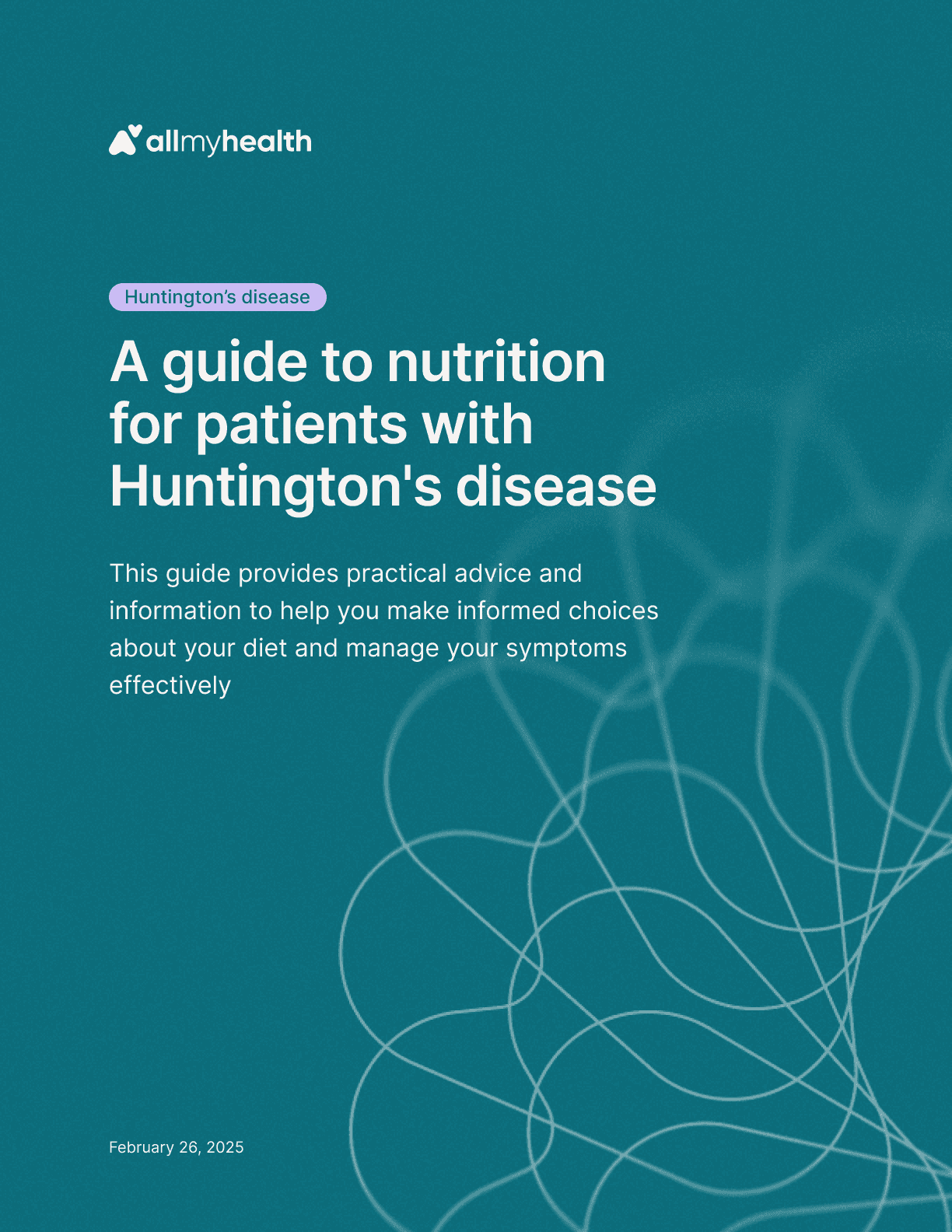
Huntington's disease
·
A guide to nutrition for patients with Huntington's disease
Feb 26, 2025

Spinal muscular atrophy
·
A guide to nutrition for patients with spinal muscular atrophy
Feb 26, 2025
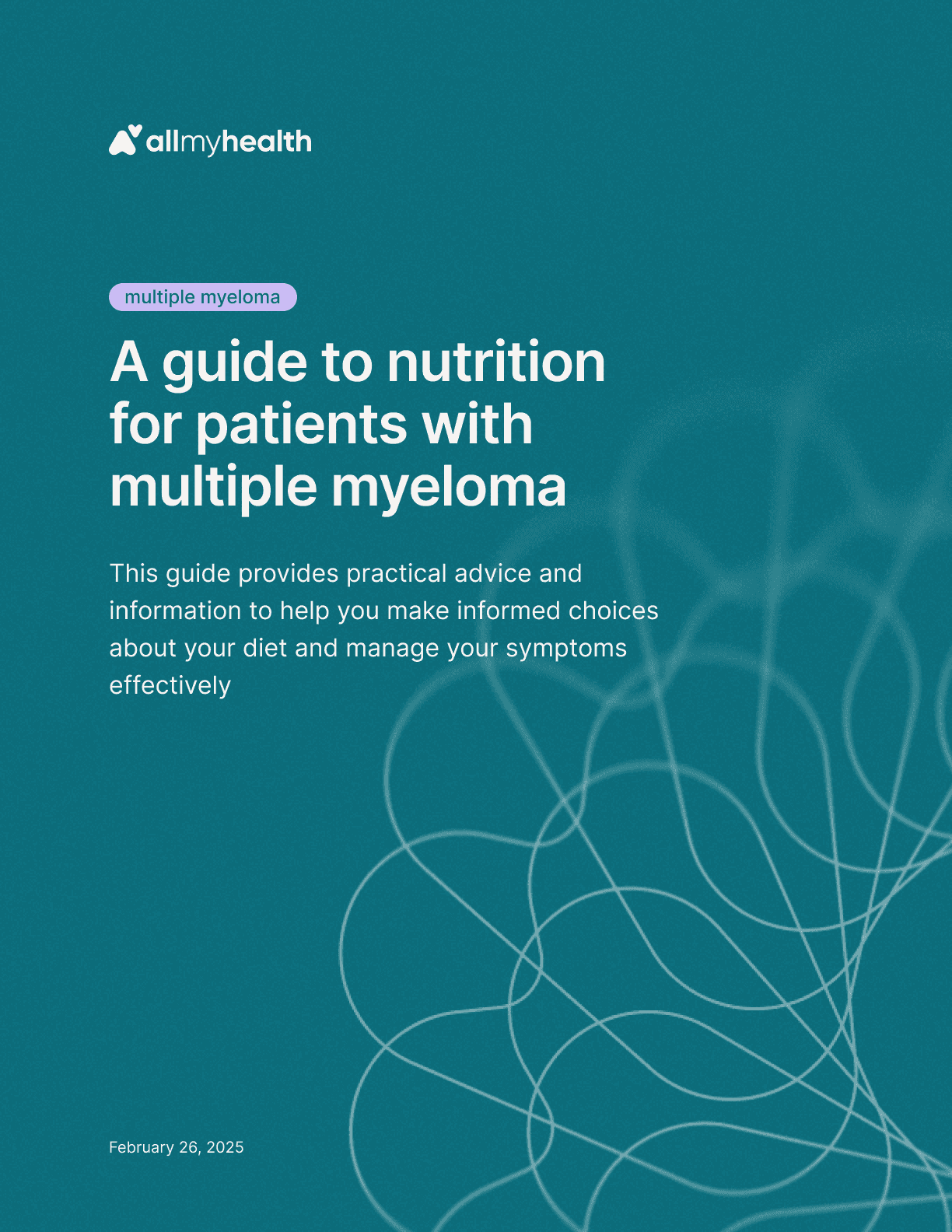
Multiple myeloma
·
A guide to nutrition for patients with multiple myeloma
Feb 26, 2025
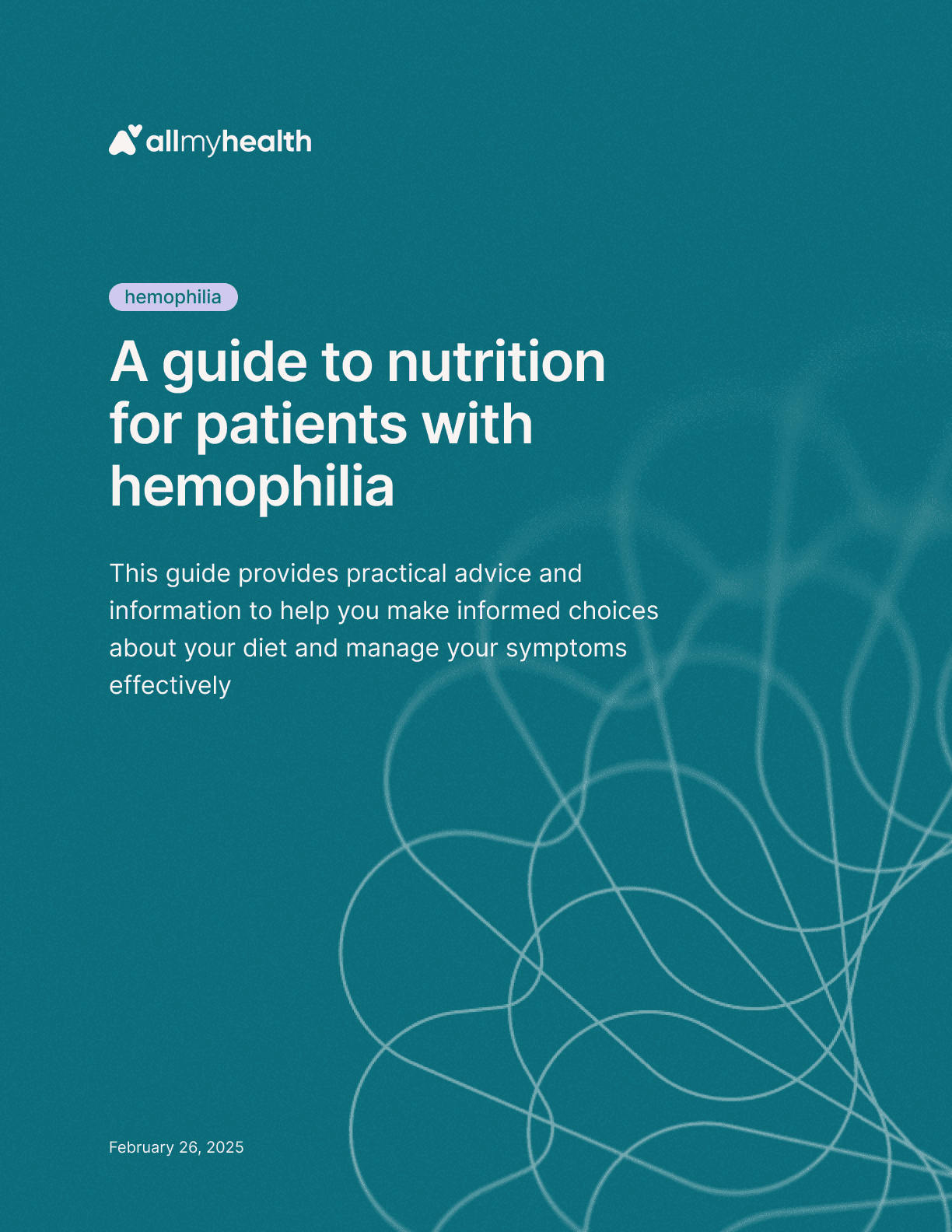
Hemophilia
·
A guide to nutrition for patients with hemophilia
Feb 26, 2025
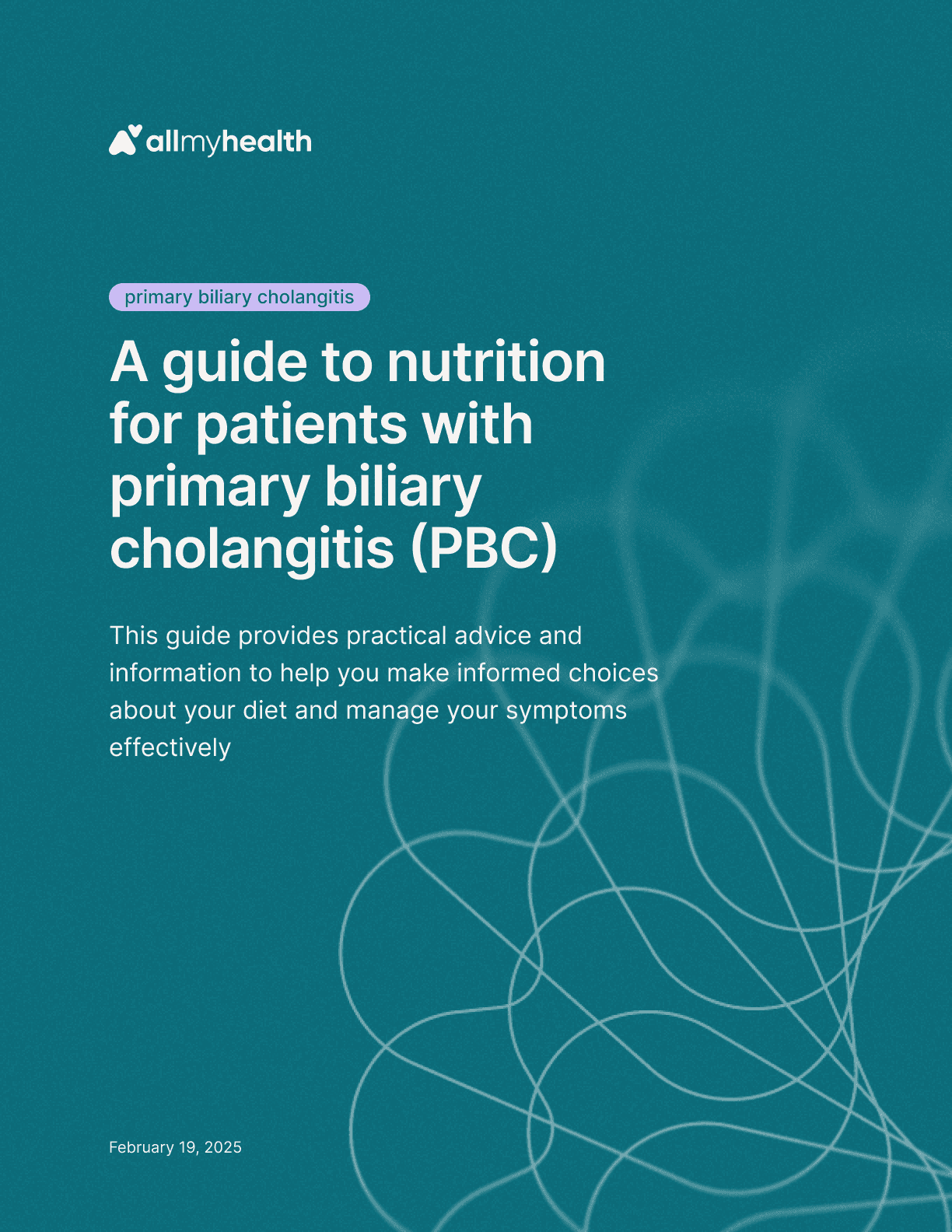
Primary biliary cholangitis
·
A guide to nutrition for patients with primary biliary cholangitis (PBC)
Feb 19, 2025
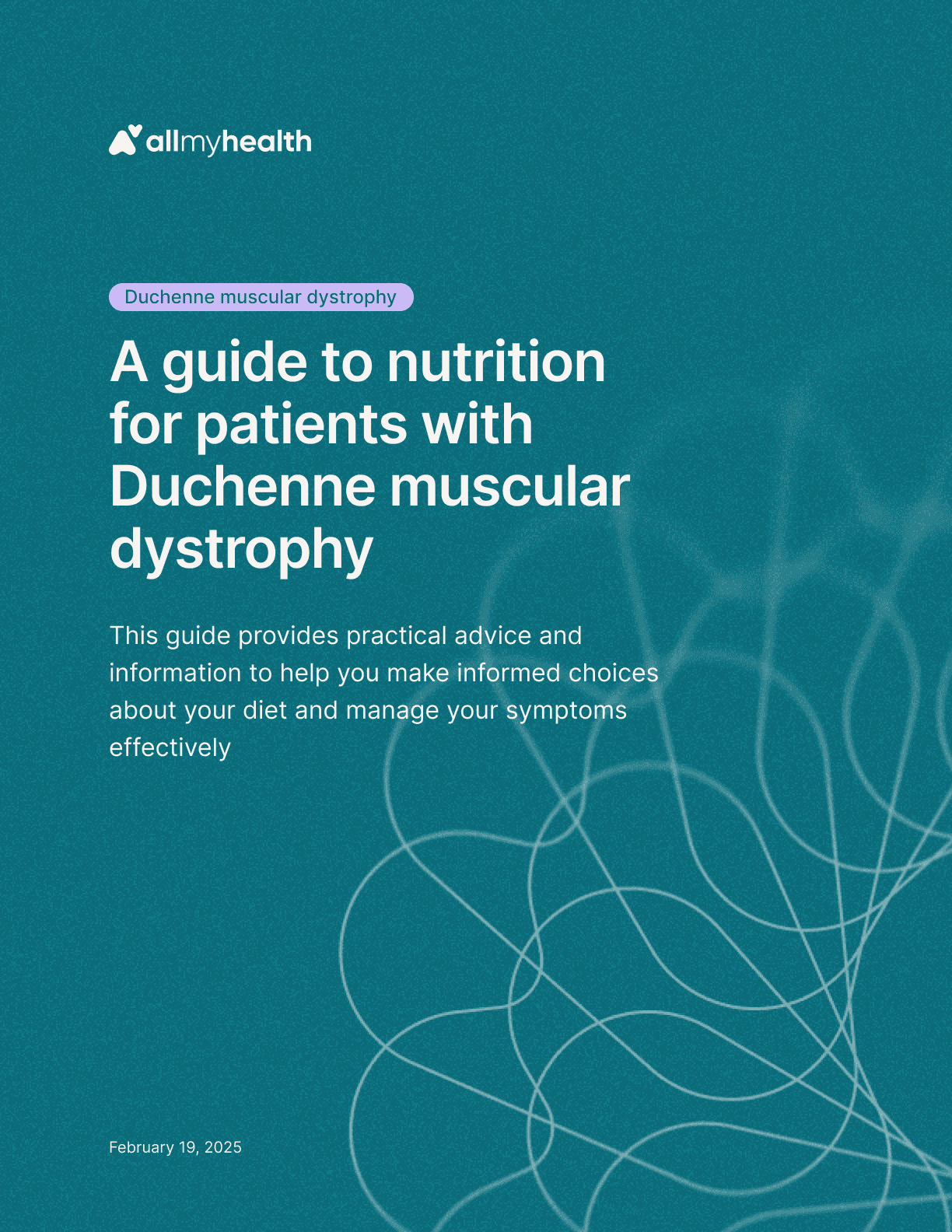
Duchenne muscular dystrophy
·
A guide to nutrition for patients with Duchenne muscular dystrophy
Feb 19, 2025
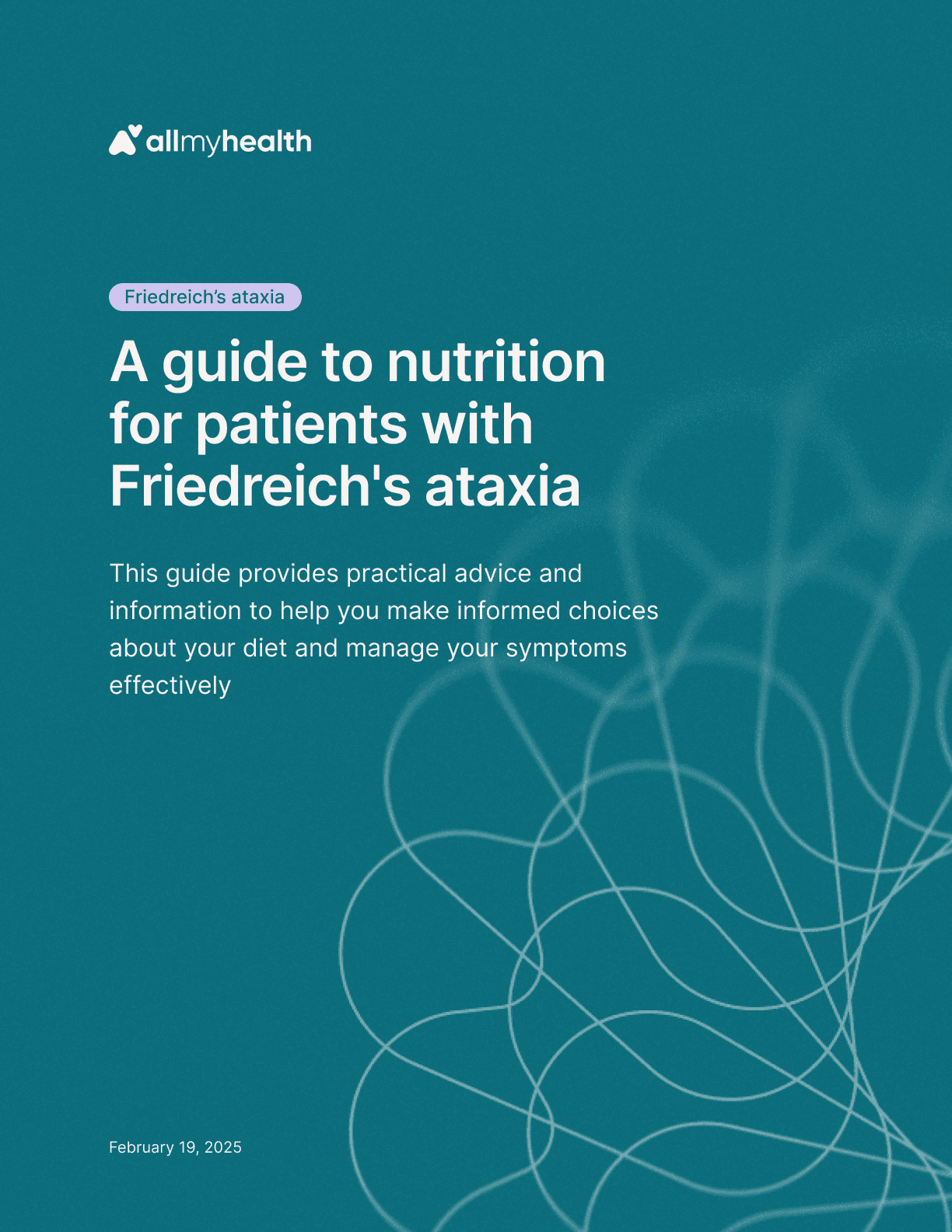
Friedreich's ataxia
·
A guide to nutrition for patients with Friedreich's ataxia
Feb 19, 2025
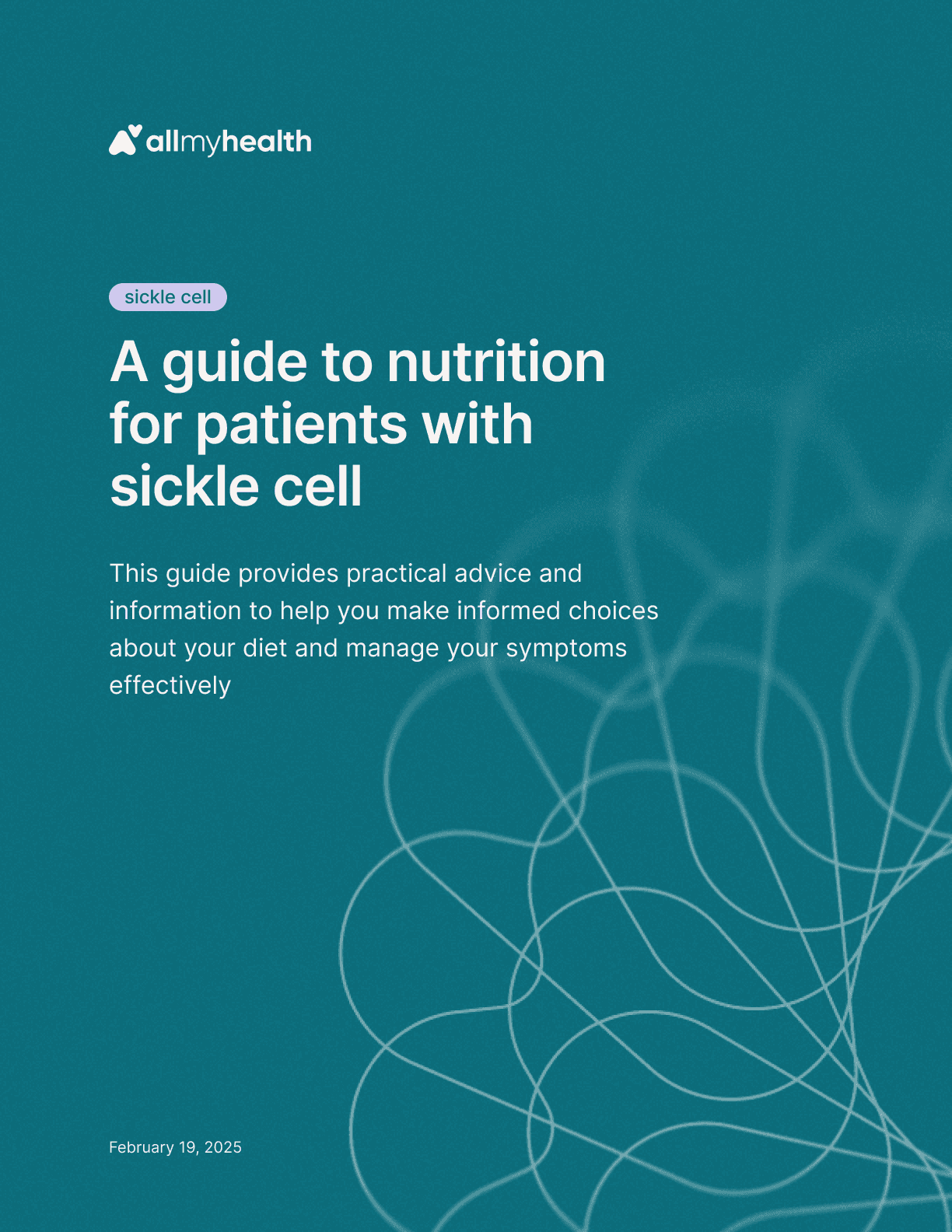
Sickle cell
·
A guide to nutrition for patients with sickle cell
Feb 19, 2025

Mantle cell lymphoma
·
A guide to nutrition for patients with mantle cell lymphoma
Feb 19, 2025
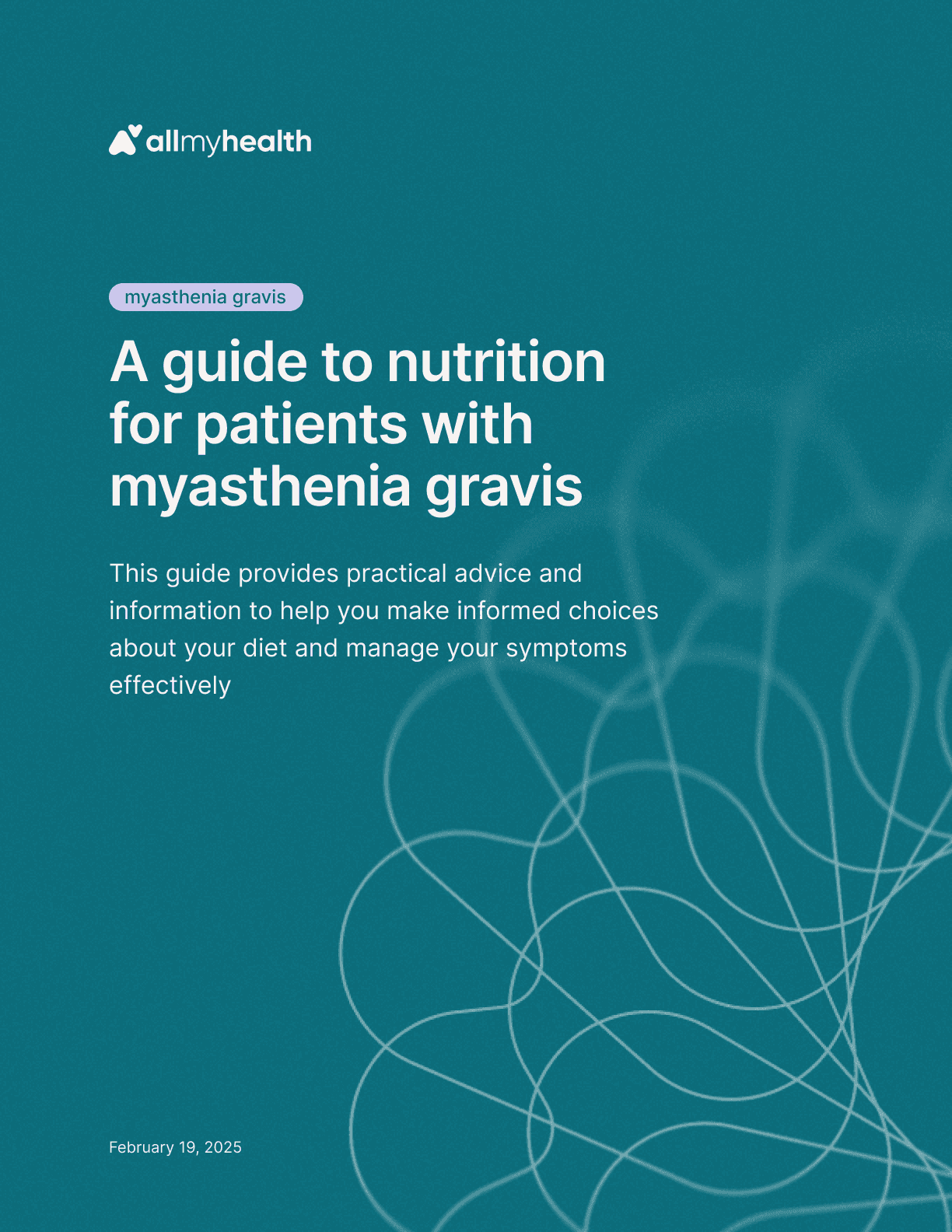
Myasthenia gravis
·
A guide to nutrition for patients with myasthenia gravis
Feb 19, 2025
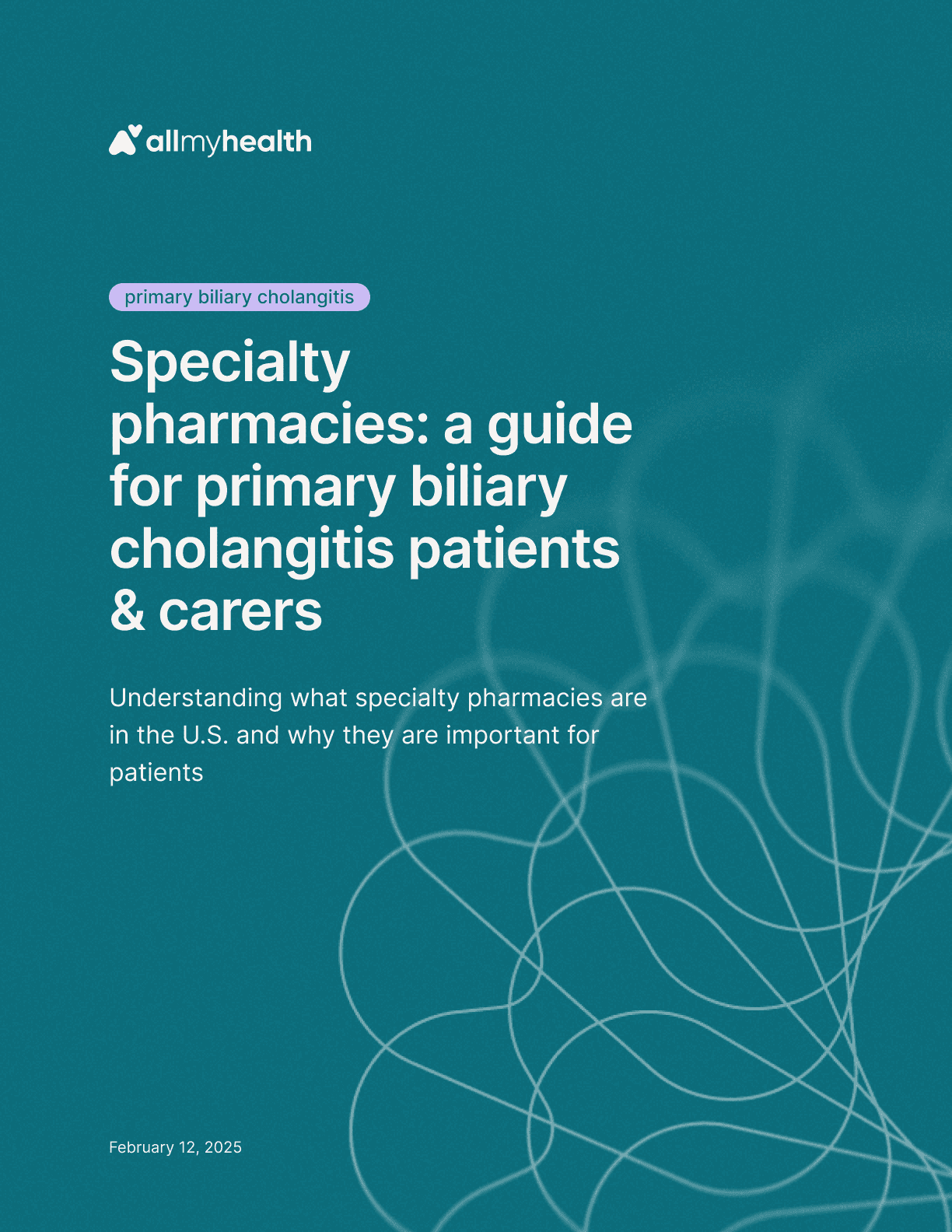
Primary biliary cholangitis
·
Specialty pharmacies: a guide for primary biliary cholangitis patients & carers
Feb 12, 2025
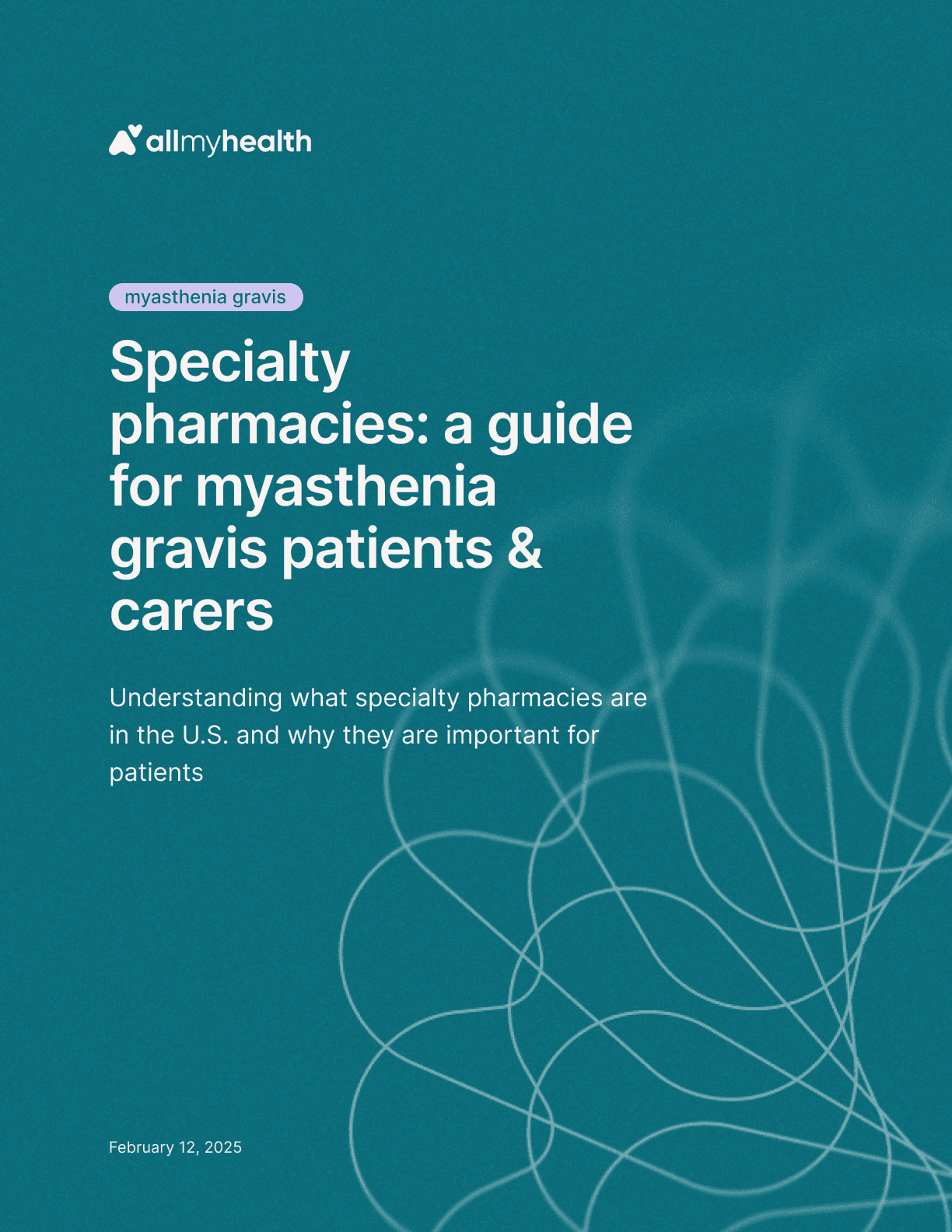
Myasthenia gravis
·
Specialty pharmacies: a guide for myasthenia gravis patients & carers
Feb 12, 2025
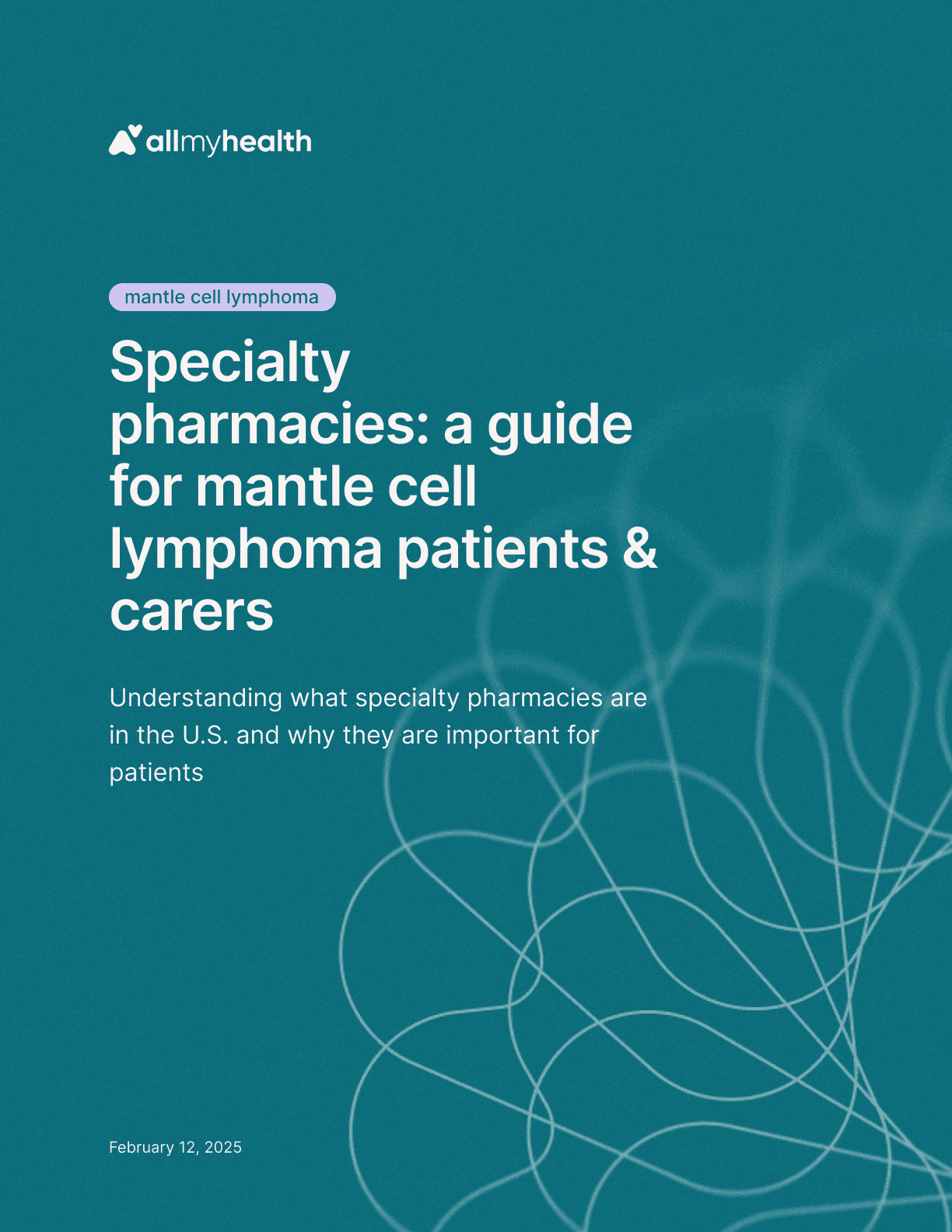
Mantle cell lymphoma
·
Specialty pharmacies: a guide for mantle cell lymphoma patients & carers
Feb 12, 2025
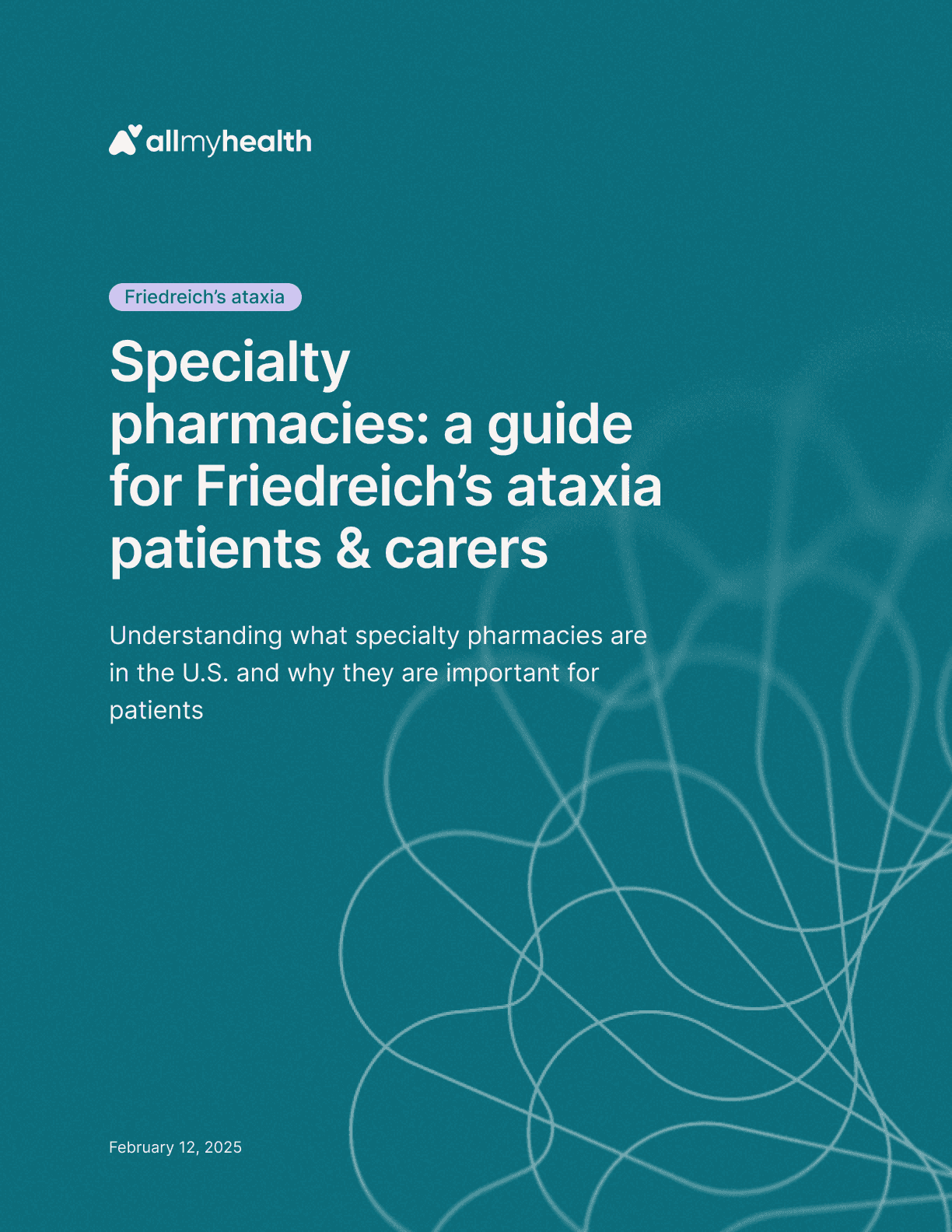
Friedreich's ataxia
·
Specialty pharmacies: a guide for Friedreich’s ataxia patients & carers
Feb 12, 2025
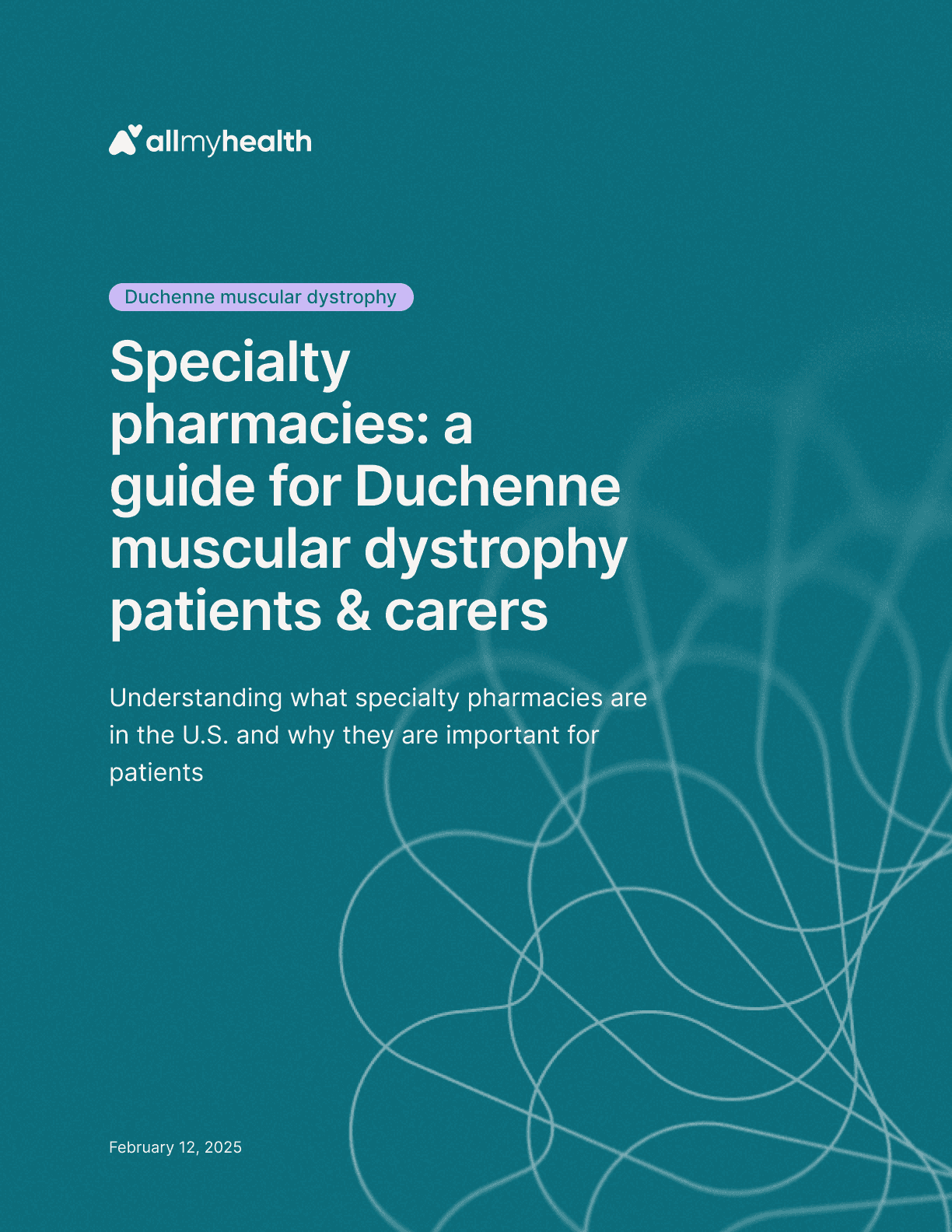
Duchenne muscular dystrophy
·
Specialty pharmacies: a guide for Duchenne muscular dystrophy patients & carers
Feb 12, 2025

Spinal muscular atrophy
·
Specialty pharmacies: a guide for SMA patients & carers
Feb 6, 2025
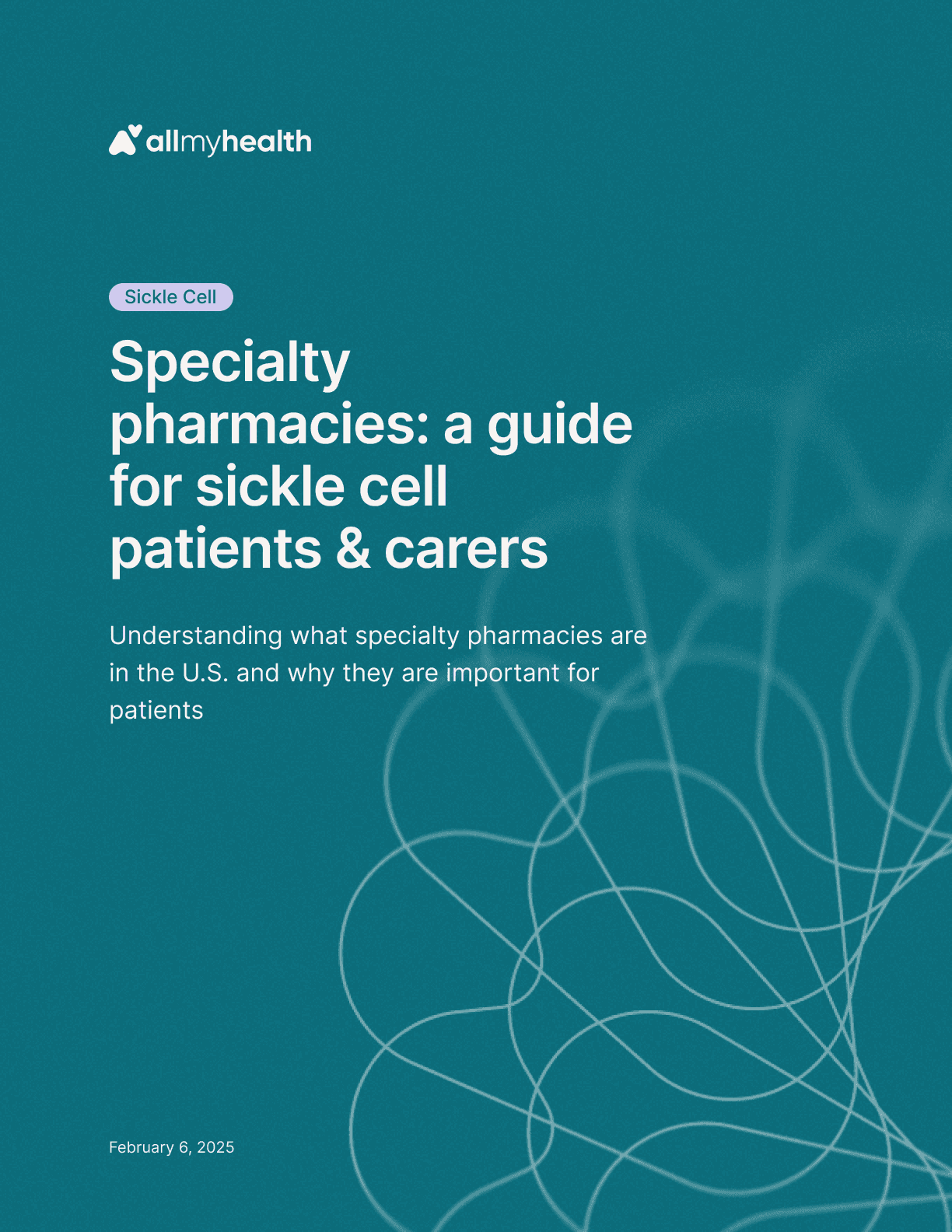
Sickle cell
·
Specialty pharmacies: a guide for sickle cell patients & carers
Feb 6, 2025
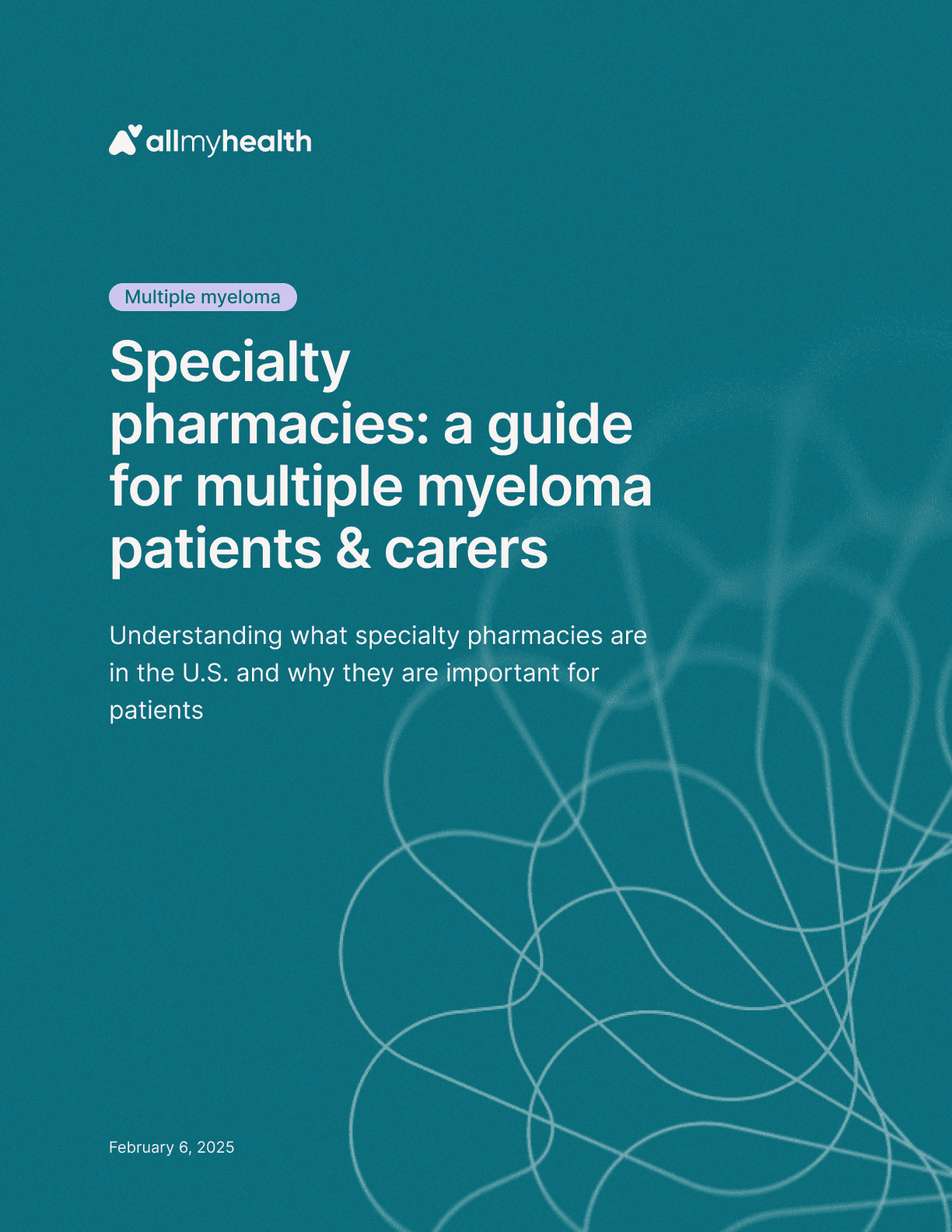
Multiple myeloma
·
Specialty pharmacies: a guide for multiple myeloma patients & carers
Feb 6, 2025
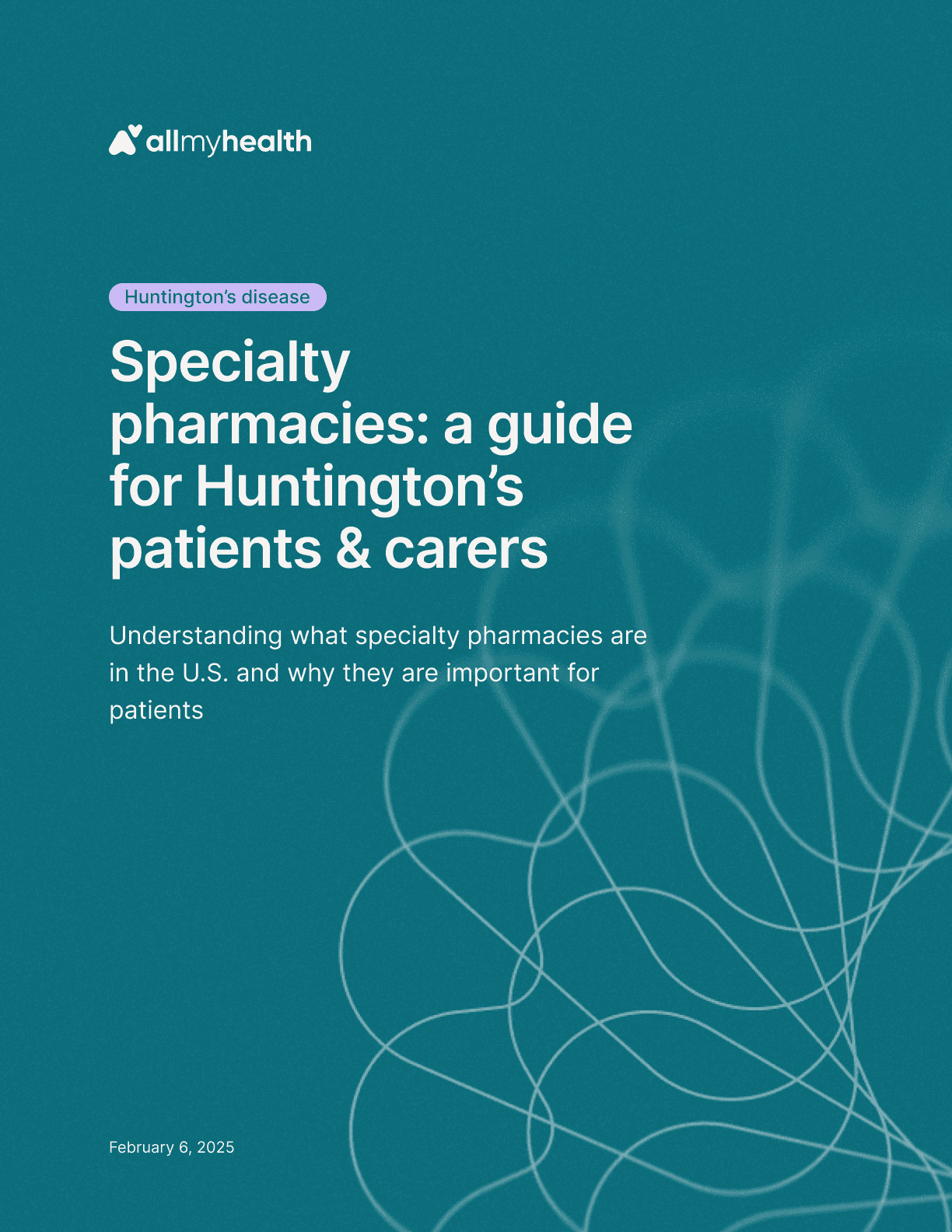
Huntington's disease
·
Specialty pharmacies: a guide for Huntington’s disease patients & carers
Feb 6, 2025
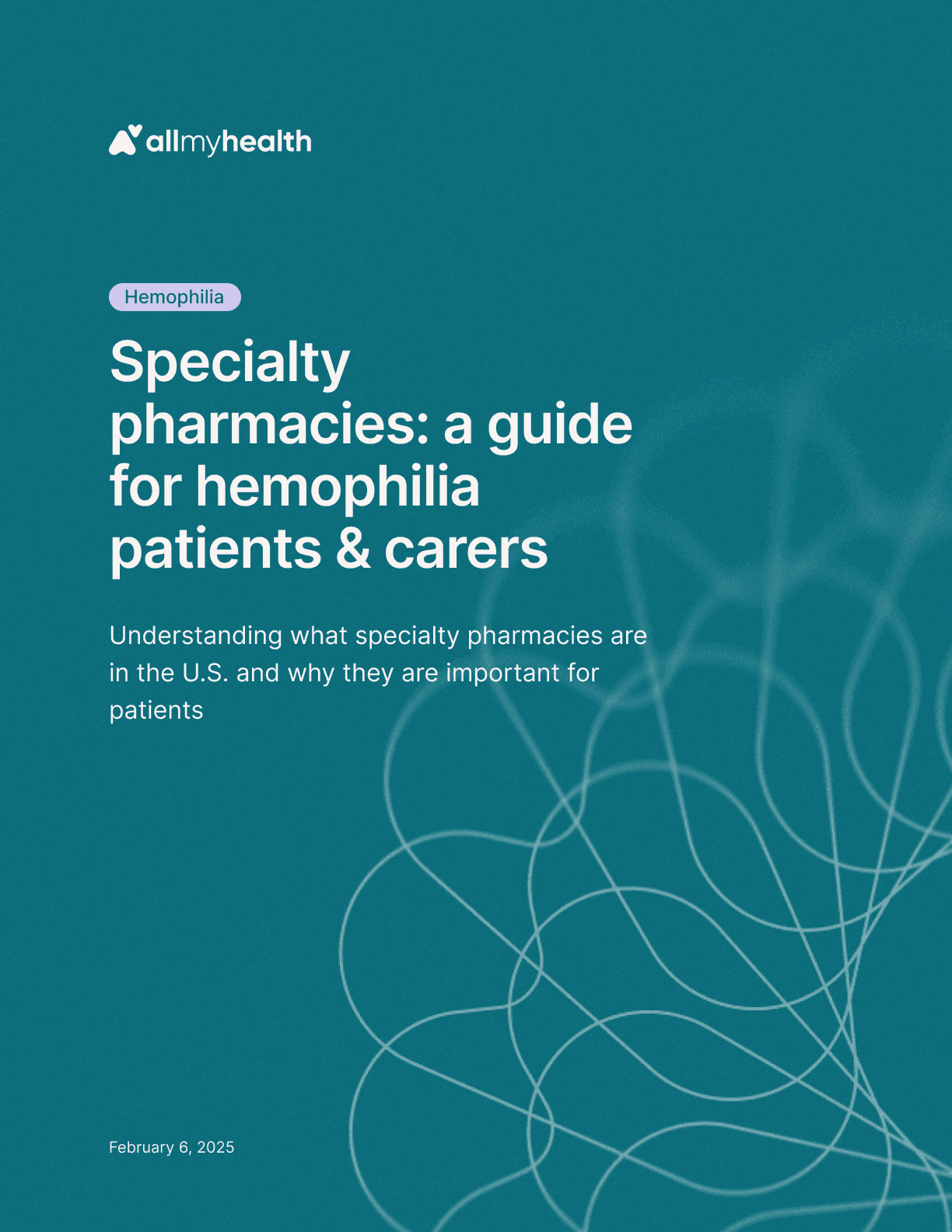
Hemophilia
·
Specialty pharmacies: a guide for hemophilia patients & carers
Feb 6, 2025

Amyotrophic lateral sclerosis
·
Specialty pharmacies: a guide for ALS patients & carers
Feb 6, 2025
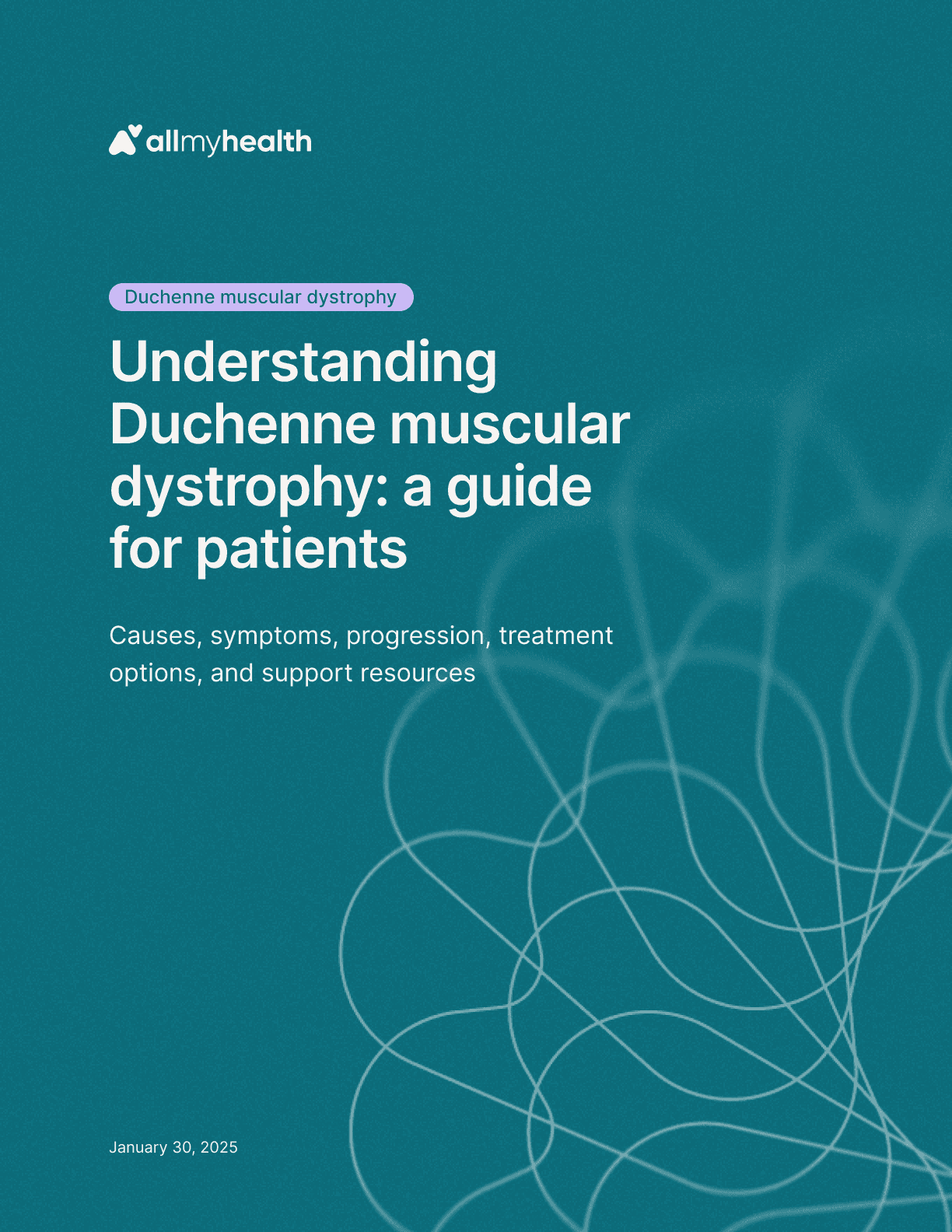
Duchenne muscular dystrophy
·
Understanding Duchenne muscular dystrophy: a guide for patients
Jan 30, 2025
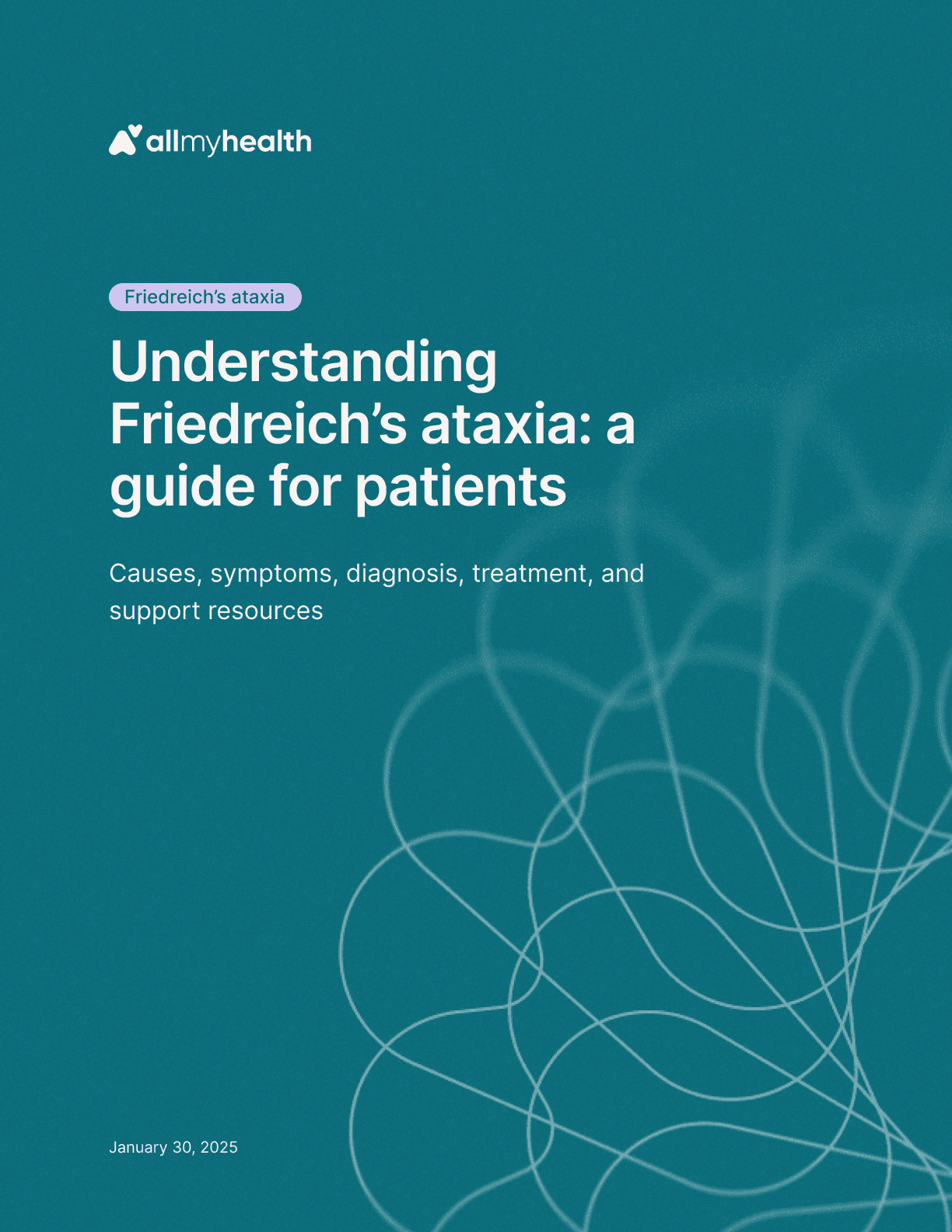
Friedreich's ataxia
·
Understanding Friedreich's ataxia: a guide for patients
Jan 30, 2025

Hemophilia
·
Understanding hemophilia: a guide for patients
Jan 30, 2025
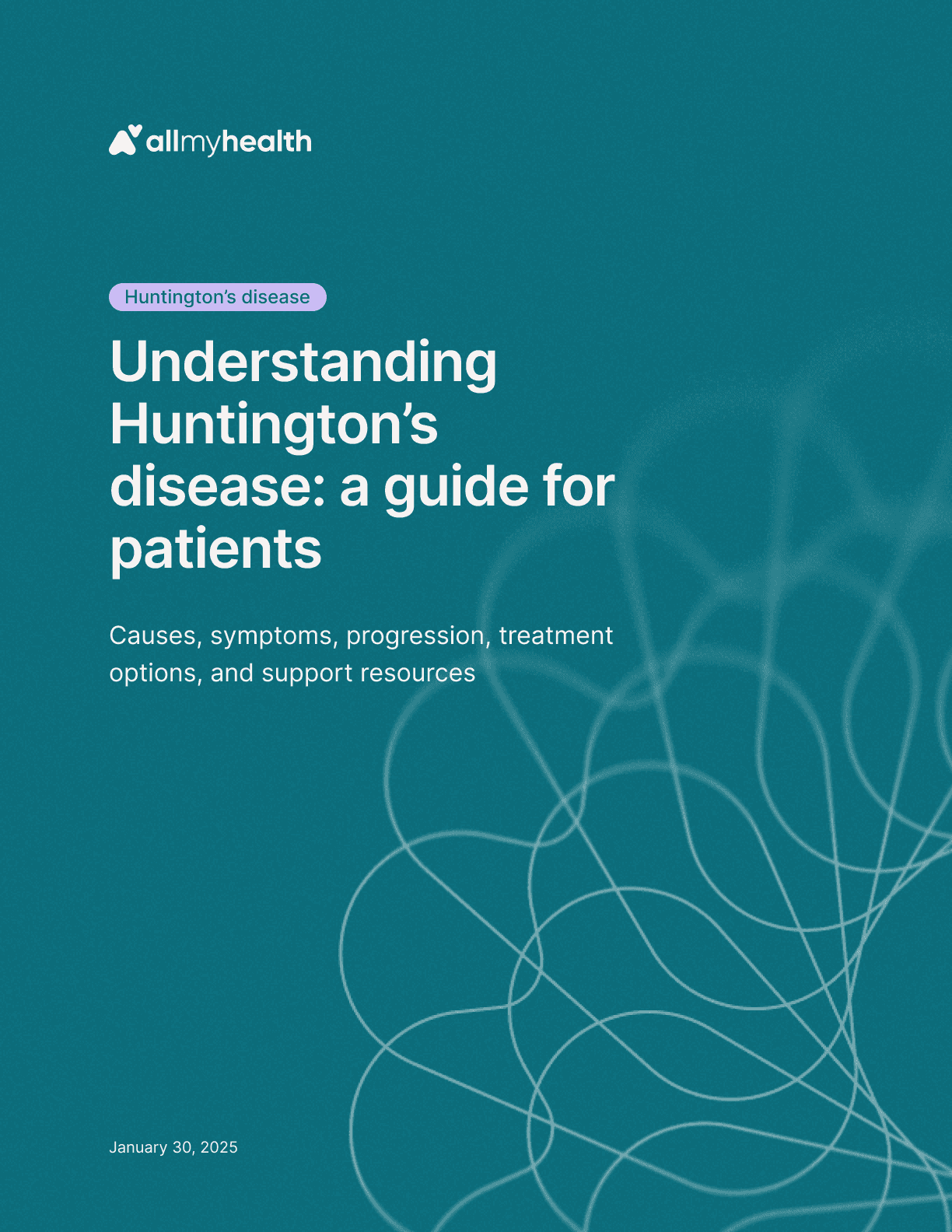
Huntington's disease
·
Understanding Huntington’s disease: a guide for patients
Jan 30, 2025
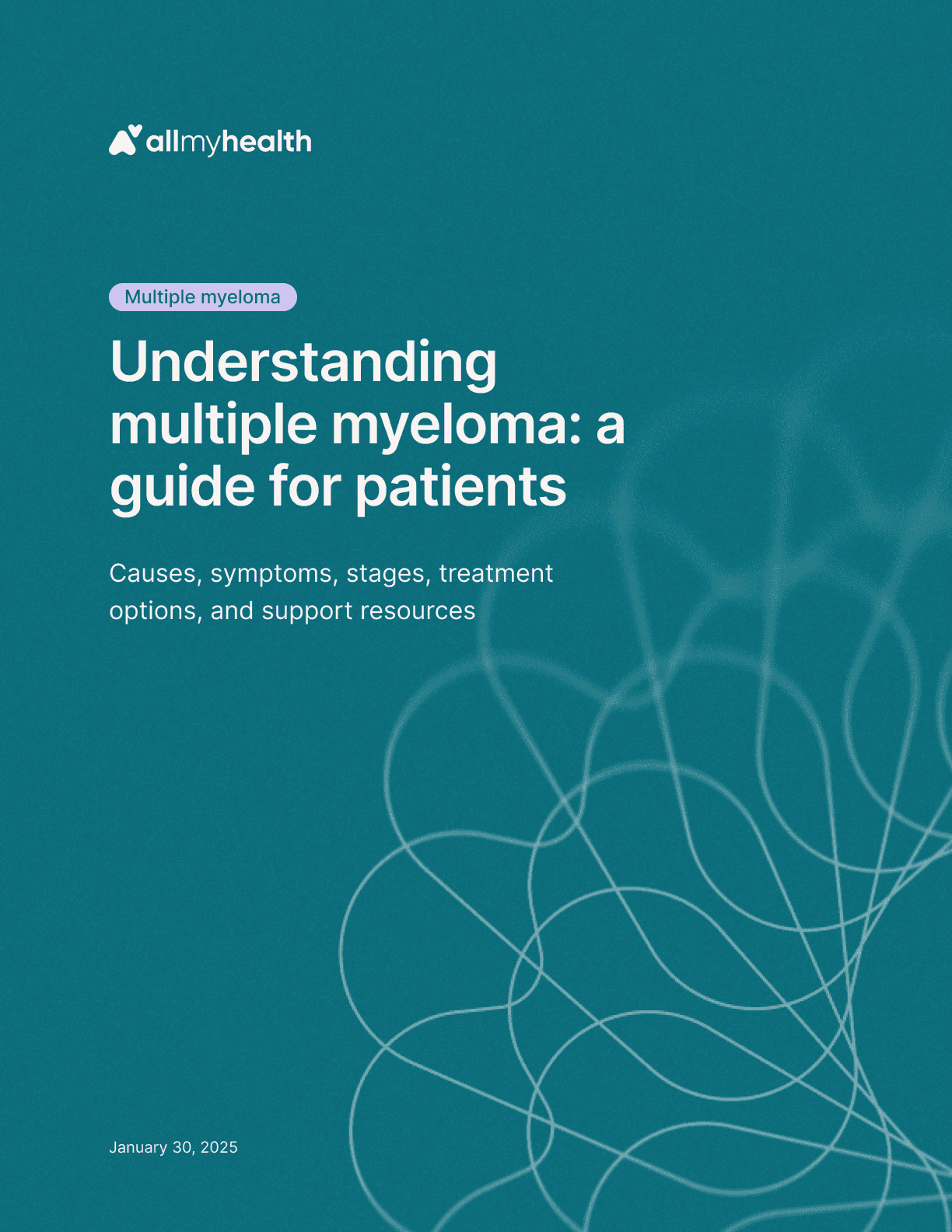
Multiple myeloma
·
Understanding multiple myeloma: a guide for patients
Jan 30, 2025

Primary biliary cholangitis
·
Understanding primary biliary cholangitis: a guide for patients
Jan 30, 2025
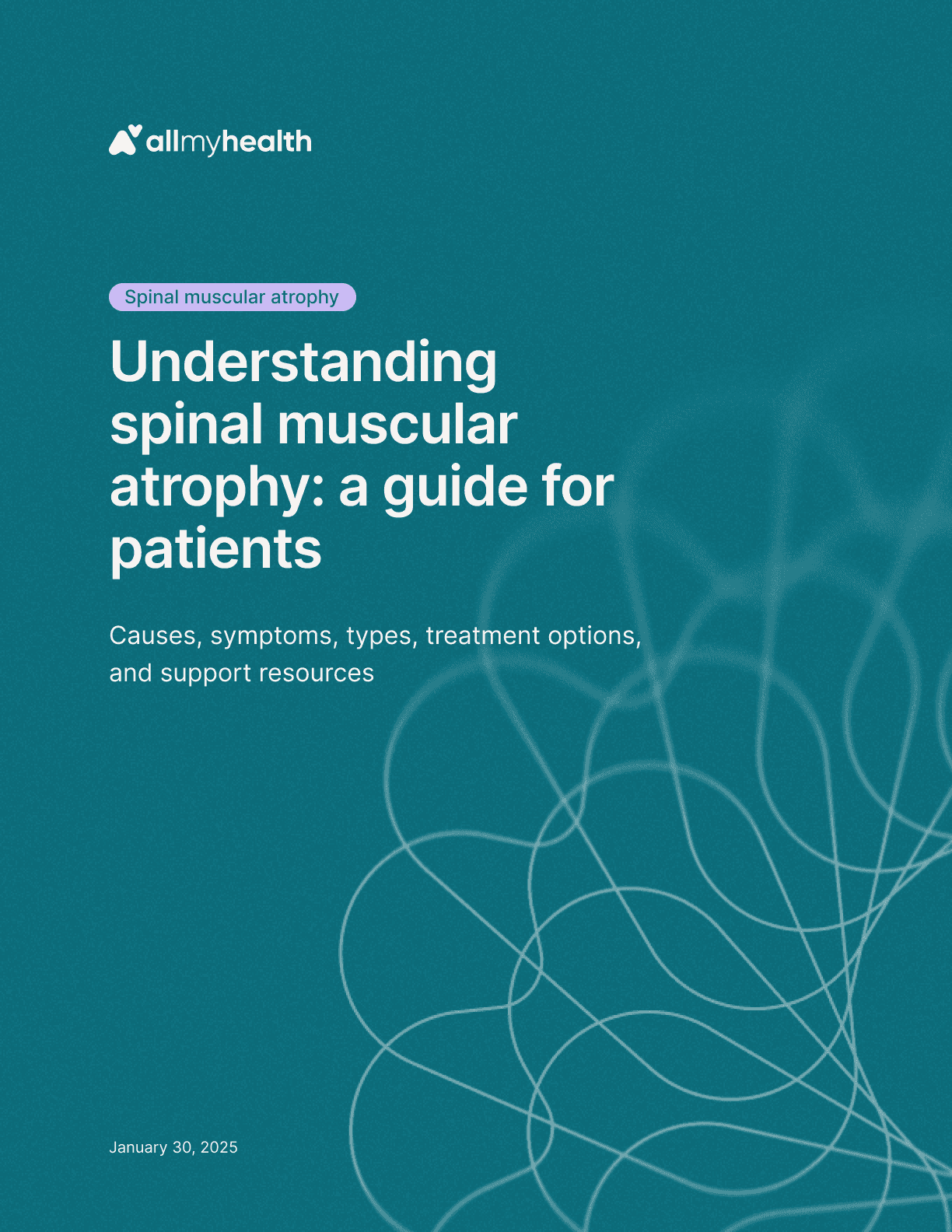
Spinal muscular atrophy
·
Understanding spinal muscular atrophy: a guide for patients
Jan 30, 2025

Amyotrophic lateral sclerosis
·
Understanding amyotrophic lateral sclerosis: a guide for patients
Jan 23, 2025
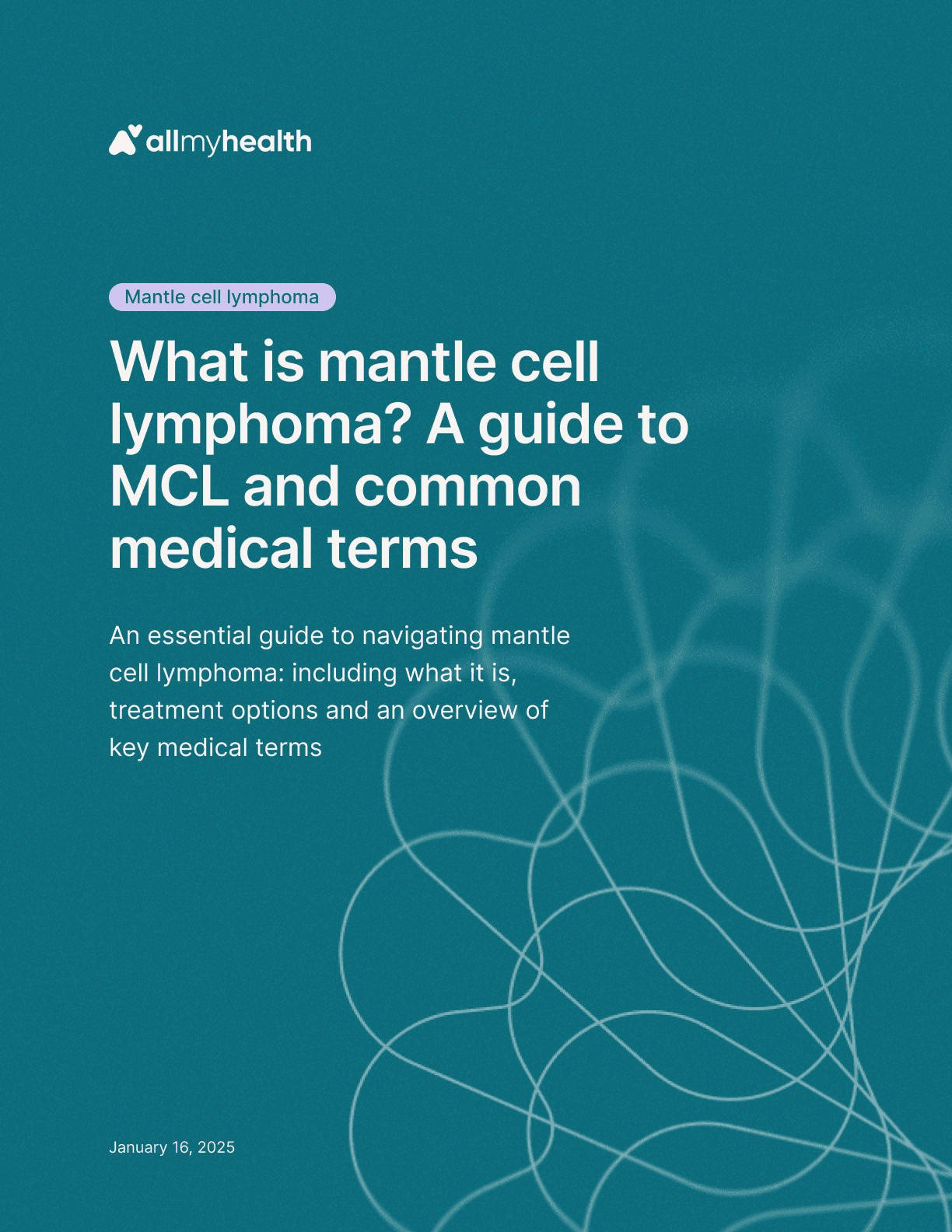
Mantle cell lymphoma
·
What is mantle cell lymphoma? A guide to MCL and common medical terms
Jan 23, 2025
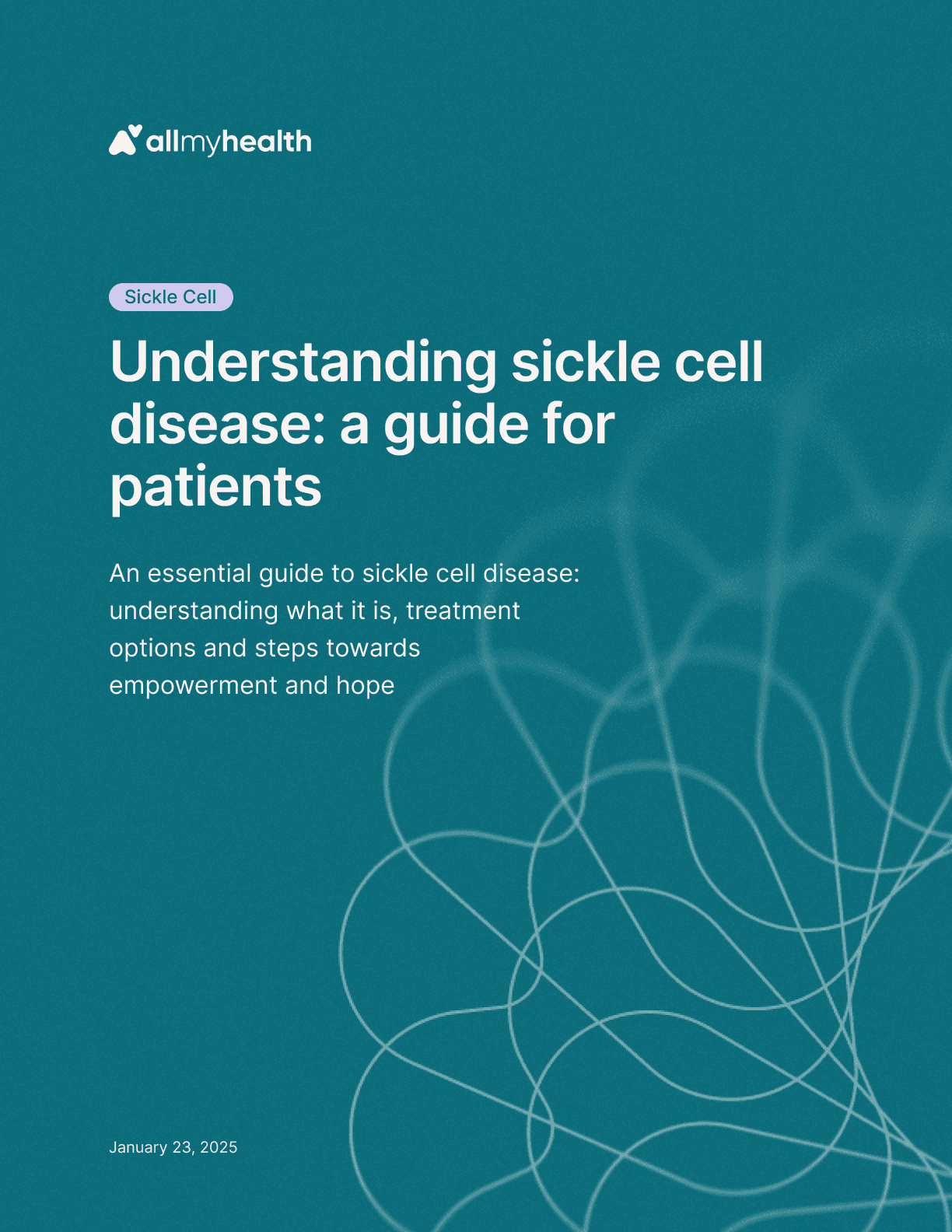
Sickle cell
·
Understanding sickle cell disease: a guide for patients
Jan 23, 2025

Primary biliary cholangitis
·
Exploring financial assistance options for primary biliary cholangitis treatment in the U.S.
Jan 17, 2025
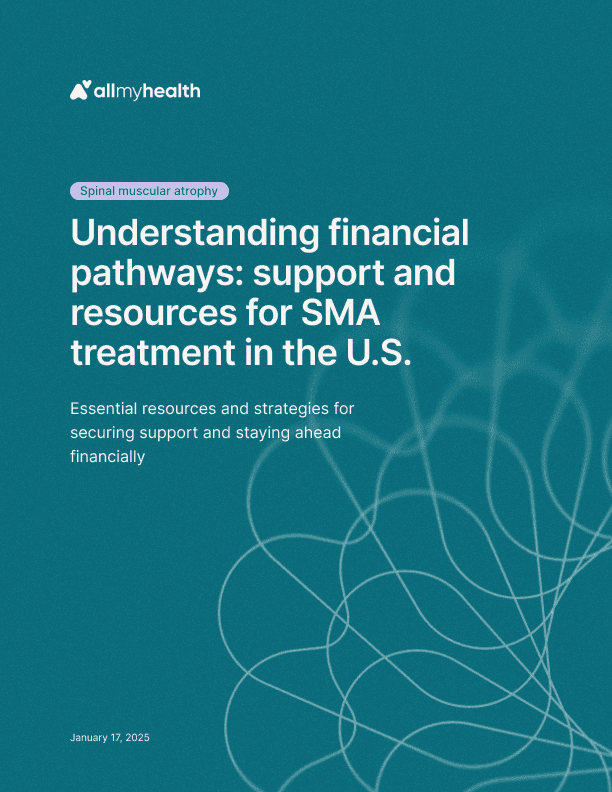
Spinal muscular atrophy
·
Understanding financial pathways: support and resources for SMA treatment in the U.S.
Jan 17, 2025

Duchenne muscular dystrophy
·
Financial strategies for muscular dystrophy in the U.S.
Jan 17, 2025

Hemophilia
·
Navigating financial assistance for hemophilia treatment in the U.S.
Jan 17, 2025
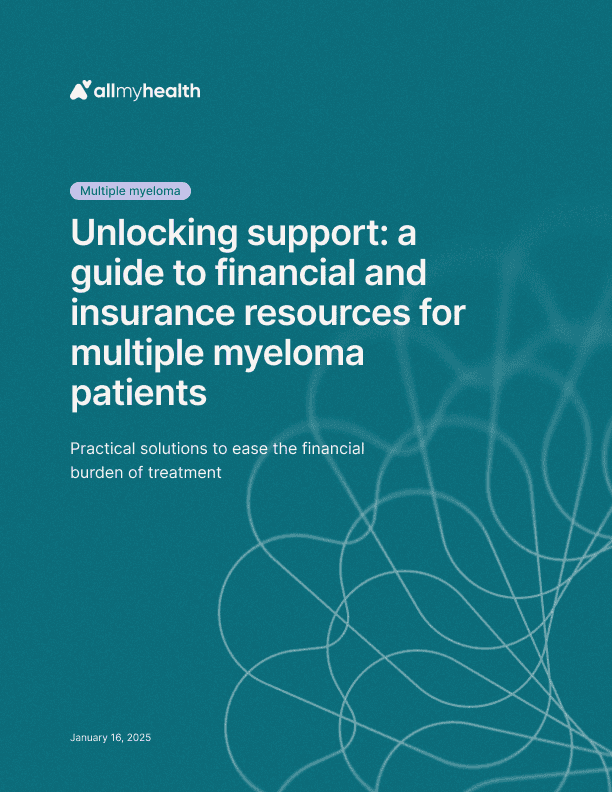
Multiple myeloma
·
Unlocking support: a guide to financial and insurance resources for multiple myeloma patients
Jan 17, 2025

Friedreich's ataxia
·
Navigating Friedreich’s ataxia in the U.S.: a practical guide to support and financial planning
Jan 17, 2025
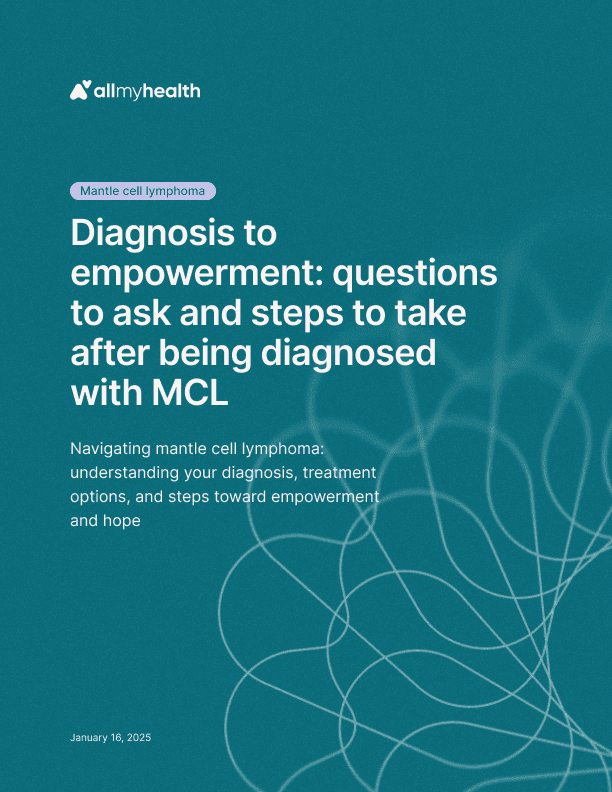
Mantle cell lymphoma
·
Diagnosis to empowerment: questions to ask and steps to take after being diagnosed with MCL
Jan 16, 2025
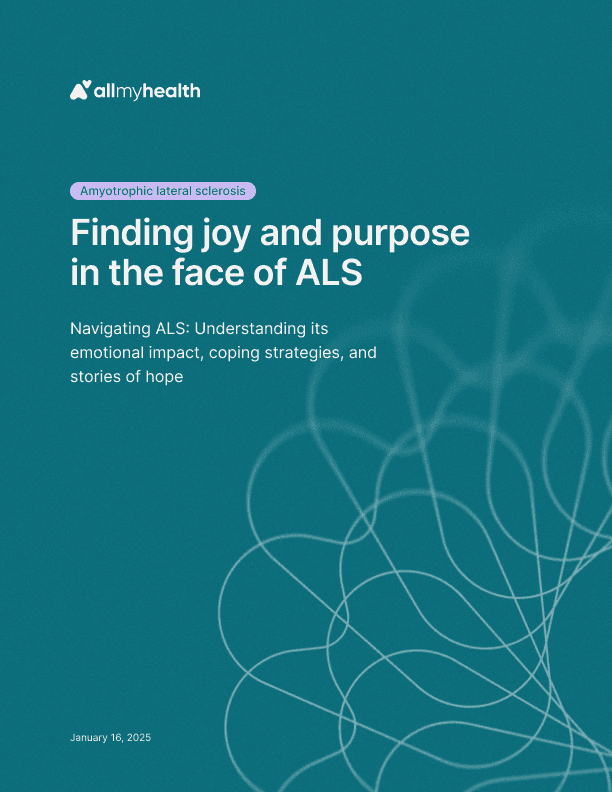
Amyotrophic lateral sclerosis
·
Finding joy and purpose in the face of ALS
Jan 16, 2025

Sickle cell
·
Thriving through the challenges: tips for managing school, work, and family with sickle cell disease
Jan 16, 2025

Myasthenia gravis
·
Financial strategies for living with myasthenia gravis in the U.S.: a guide to long-term planning
Jan 16, 2025